How about taking a trip to Vietnam on a motorbike at your own pace, discovering the places that most interest you? That’s exactly what we asked ourselves once we set foot in Hanoi.
We’d heard about the idea, and some Facebook readers encouraged us to try it. So, from one day to the next, we started looking for a motorcycle that could carry two people and our backpacks without falling apart at the first opportunity.
We confirm you can find almost any type of motorcycle on the second-hand market in Vietnam, whether large or small. It all depends on your budget and the likelihood of reselling it when your trip is over. There’s a difference between buying one of the 100cc Honda Wins, which everyone rides and is relatively easy to resell, and a larger motorcycle that might be harder to sell. Ultimately, it’s your choice.
Since we planned to ride together with the weight of our backpacks, we decided it should be at least 125cc and, above all, comfortable. We weren’t fans of the Honda Win, so we went for a Suzuki GS-type bike.
Our advice: whatever bike you’re considering, make sure to test it first. We don’t know much about mechanics, but having experience with bikes in Spain helped us check whether it handled well, if the brakes and lights worked, if the gears shifted smoothly, if the tires had good tread, and so on.We ended up buying a Honda Bonus replica, the SYM Bonus MB125A (from San Yang Motors). We’re really happy with it—it rides well, is comfortable, and was a good deal at 7,000,000 dong, including a helmet and a raincoat.
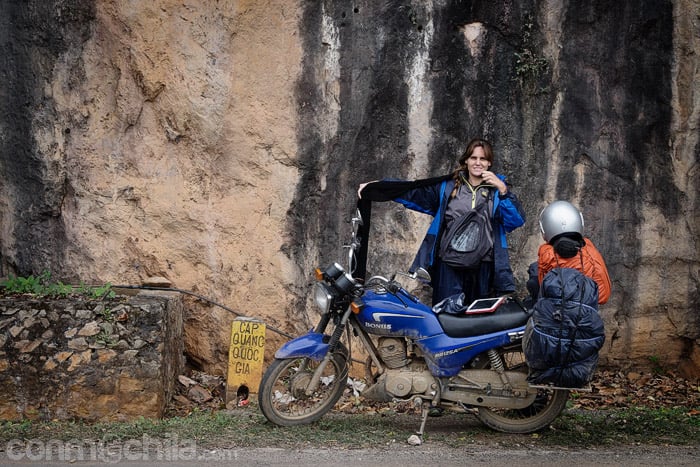
We bought it from a foreigner who had traveled with it from Ho Chi Minh City, finding it through an online search since none of the shops we visited had a bike we liked. We added 550,000 dong for an oil change, chain check, brakes, lights, footrests for Carme, and 350,000 dong for a custom luggage rack.
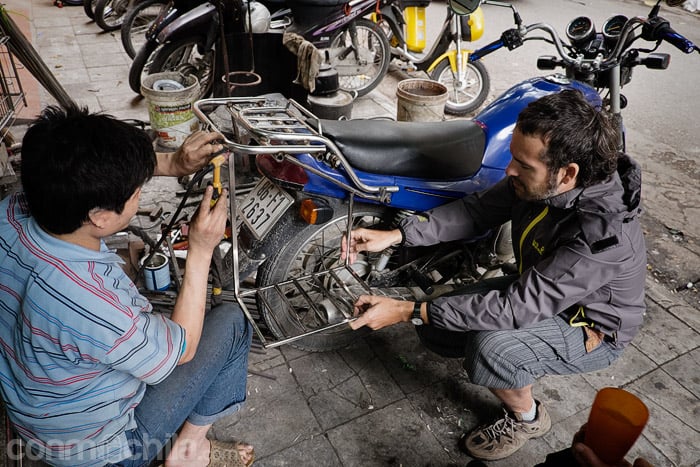
To answer the million-dollar question: yes, it’s fairly easy to sell the bike at the end of the trip. Here’s an excerpt from our travel diary:
We made a simple “For Sale” sign with a sheet of paper and a marker, added our phone number, and stuck it on the bike. Parked in front of the hostel on a busy street, we figured someone would eventually call. We had completed a few final repairs, cleaned it thoroughly, and set a very competitive price, considering how expensive the second-hand shops were.
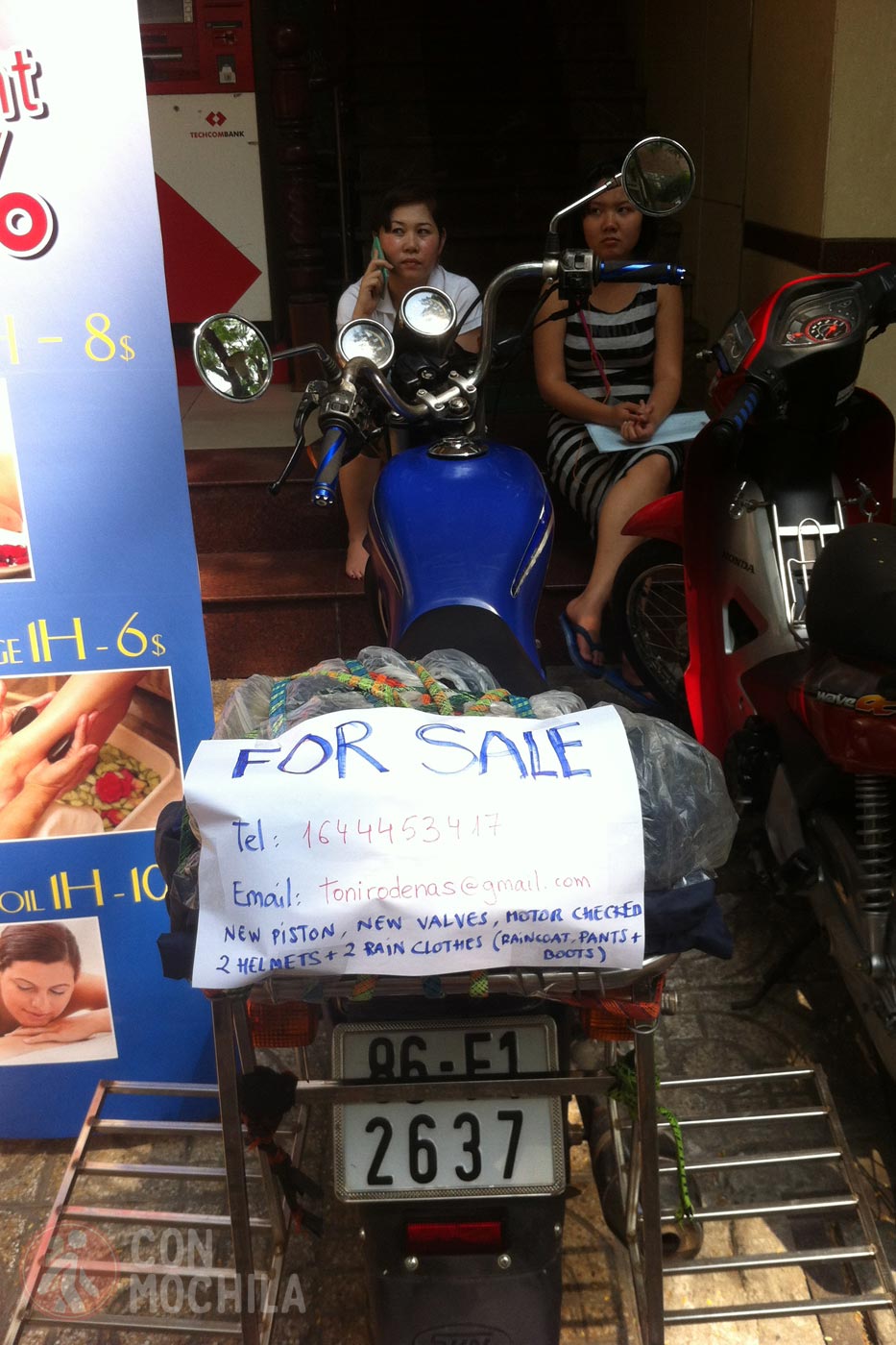
We were confident buyers would appear soon, and sure enough, the phone calls started rolling in. However, as luck would have it, after chatting on Facebook with our friends from Worlding8, who were about to arrive in Vietnam, they decided to take it off our hands. Problem solved in one afternoon!
Currently, and until further notice from Vietnamese authorities, citizens of 25 countries can travel to Vietnam without having to apply for a visa. You can obtain a 45-day visa exemption for Vietnam, allowing you to stay in the country for just over two weeks for free.
However, if you plan to stay longer, you will need to apply for a Vietnam visa. In the link above (coming soon), you’ll find all the ways to apply for it quickly and easily, with clear explanations.
While weather is a key factor when planning a trip to Vietnam, the country is generally visitable year-round. Vietnam’s long coastline, stretching from north to south, means temperatures and rainfall vary by region.
So, when is the best time to travel to Vietnam? It depends on which areas you plan to visit and the activities you’re interested in.
Vietnam’s climate is typically hot and humid, but the climate can vary significantly from region to region due to the country’s length.
Nowadays, finding hotels, guesthouses, or restaurants in Vietnam with free Wi-Fi is the usual trend, although there are also those who wish (or need) to have continuous internet connection.
To help with that, we’ll tell you how to get a Vietnam eSIM and make the most of their affordable prices. And now, we also provide information about Vietnam’s eSIM with unlimited data. If you want to get one directly, use the following link (with a discount):
It goes without saying how important it is to travel to Vietnam with a good insurance. We were the first ones to offer the famous 5% discount on IATI Insurance, but you also have it available with Heymondo Travel Insurance.
Follow the links bellow to get a discount on their website:
So far, the only maintenance we’ve done on the bike is regular oil changes. Every 400 km is ideal, though this depends on how much strain you’re putting on the bike. If you’re on flat terrain, the oil may last longer, but if you’re climbing mountains, you may need to change it before hitting 400 km.
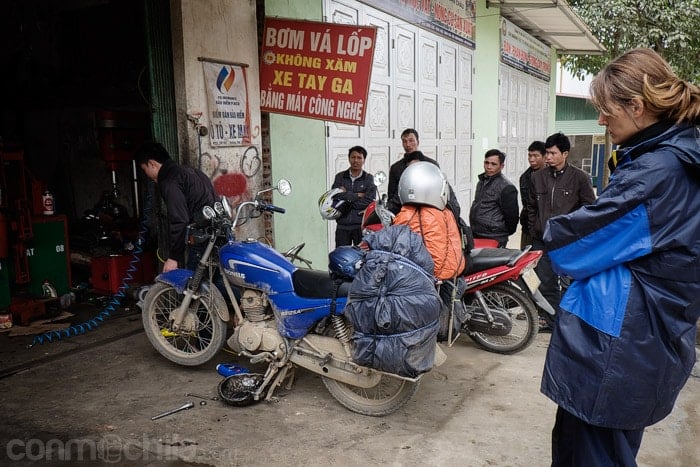
You can often tell it’s time for an oil change if the bike doesn’t accelerate as well or doesn’t run as smoothly. In nearly every village, there are mechanics with a “Xe May” sign, and an oil change generally costs about 100,000 dong.
It’s technically illegal for a foreigner to buy a motorbike in Vietnam, but everyone does it. Ideally, when you purchase a motorbike, it should come with papers, typically a blue card with the bike’s frame details.
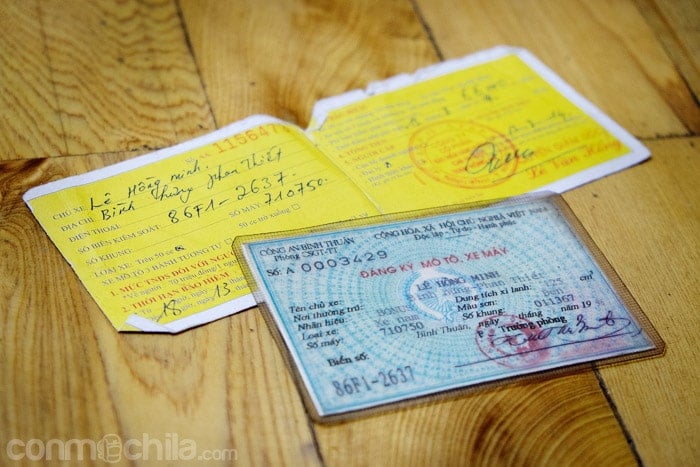
As for licenses, we have an international driving permit and a Spanish license. We’re not certain what the police would say if they stopped us (they haven’t yet), but it seems that a 100,000-dong bill can be helpful in these situations.
From experience, waterproof clothing is a must. Waterproof pants, boots, and a raincoat are essential if you don’t want to get soaked. We paid a total of 615,000 dong for the full kit (for both of us).
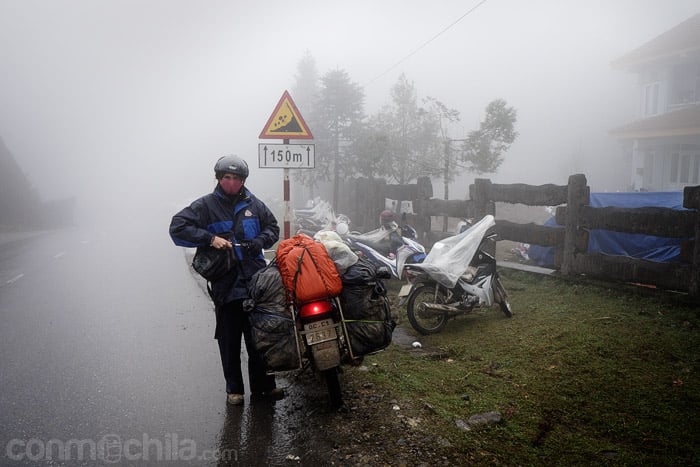
In winter, a good warm jacket is necessary. You can find one on the road or in most towns (we bought one just outside of Hanoi, although there are also plenty of shops in the city selling warm clothing from brands like The North Face). The rest of your essentials can be packed in your backpack.
We brought a tablet with a free GPS app but had to buy a Vietnam map for it, which cost €14. We also had a smartphone with Google Maps and a Vietnamese SIM card, but in some mountain areas, there’s no internet signal, so we didn’t want to risk getting lost because we didn’t have internet.
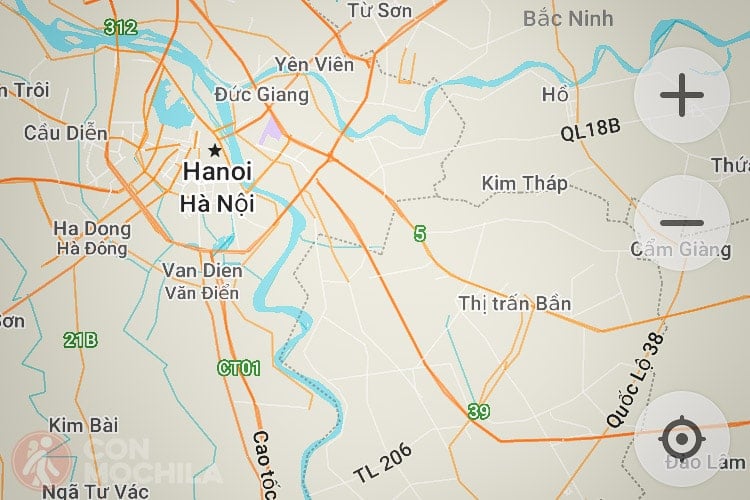
Another option is to download the Maps.me app, which is offline and free. Between the tablet and the phone, we were able to navigate pretty well.
Here’s a breakdown of our entire motorcycle route through Vietnam, which took around two months. We’ve included some helpful information for each stage.
The first stage of our motorbike tour was departing from Hanoi. After saying goodbye to our friends at the hotel, we braved the chaotic city traffic—a bit overwhelming at first, but it became the perfect introduction to the Vietnamese driving style. And with that, our motorbike adventure through Vietnam was officially underway!
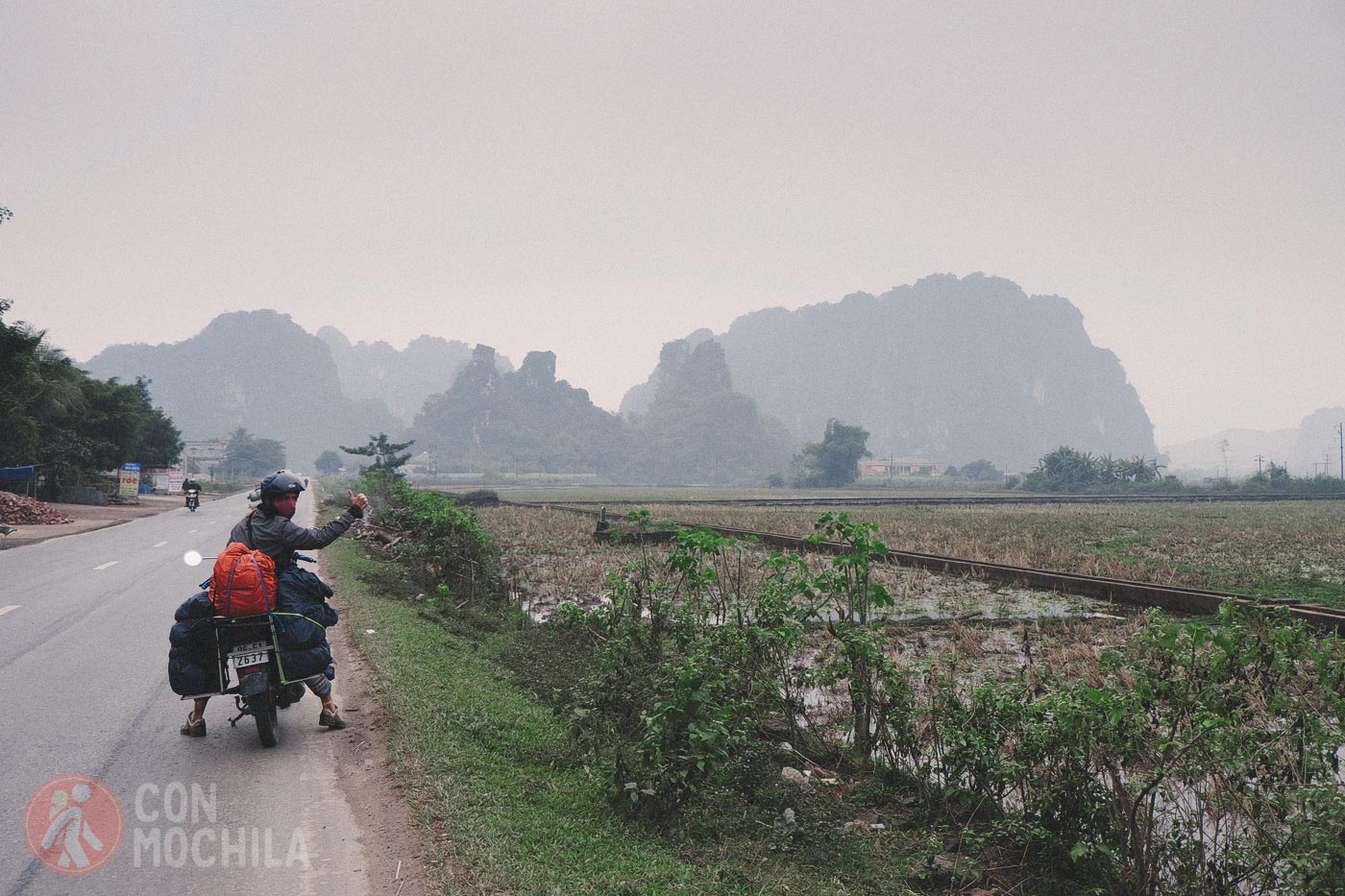
Read the Full Stage (coming soon): Stage 1. Hanoi – Mai Chau
In the second stage of our route, cold and rain became the main challenges. As we climbed higher, persistent fog kept us wet the entire time. After nearly four and a half hours, and after getting lost on small, muddy, waterlogged paths, we finally arrived at the Moc Chau homestay, where we spent the entire afternoon warming up by the fire.
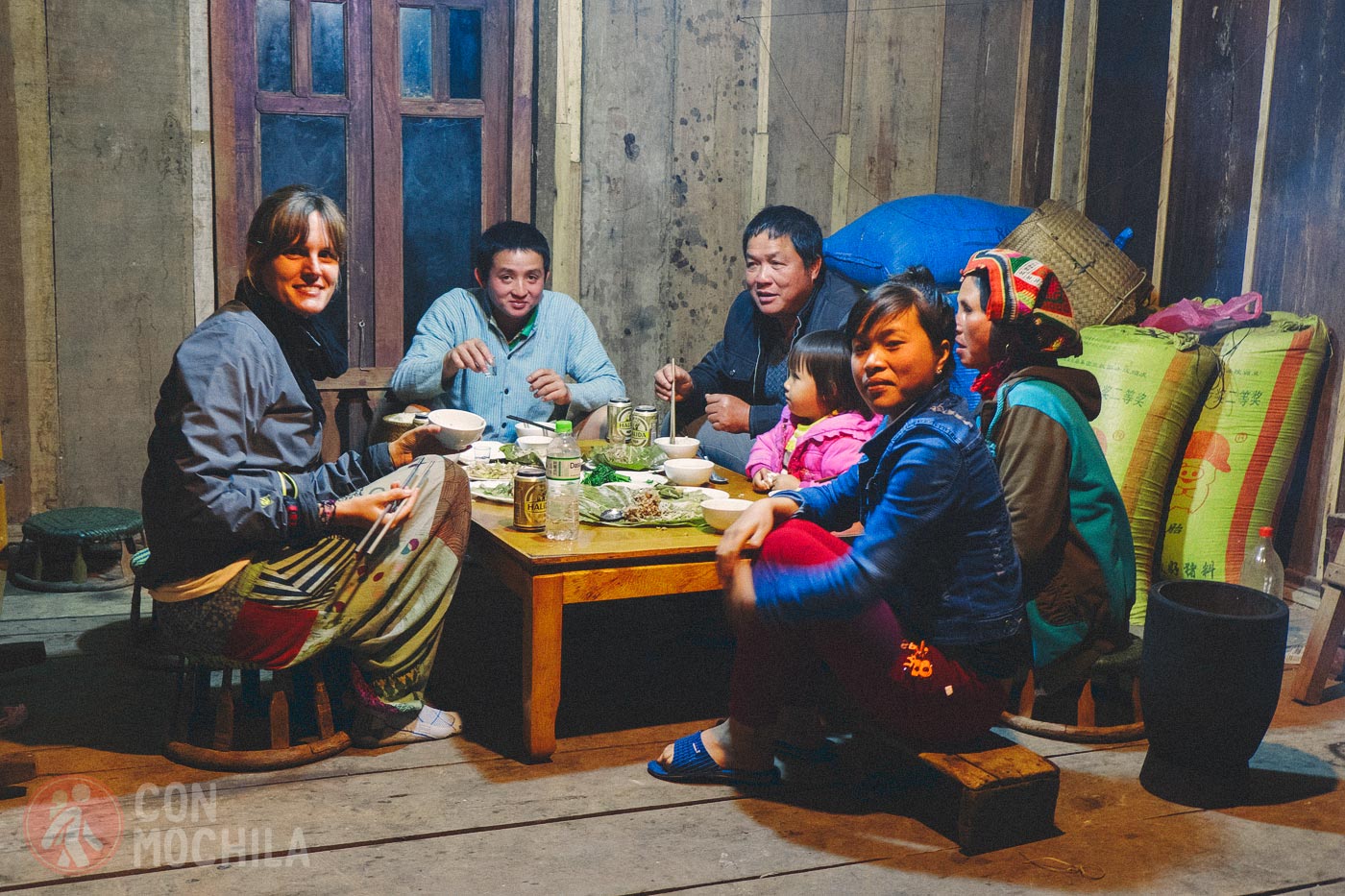
Read the Full Stage (coming soon): Stage 2. Mai Chau – Moc Chau.
With all our waterproof gear on, and after bidding farewell to the family, we set off from Moc Chau homestay toward our next destination, Son La. After a few GPS errors, we found ourselves on a mountain road with stunning views that stayed with us for most of the journey.
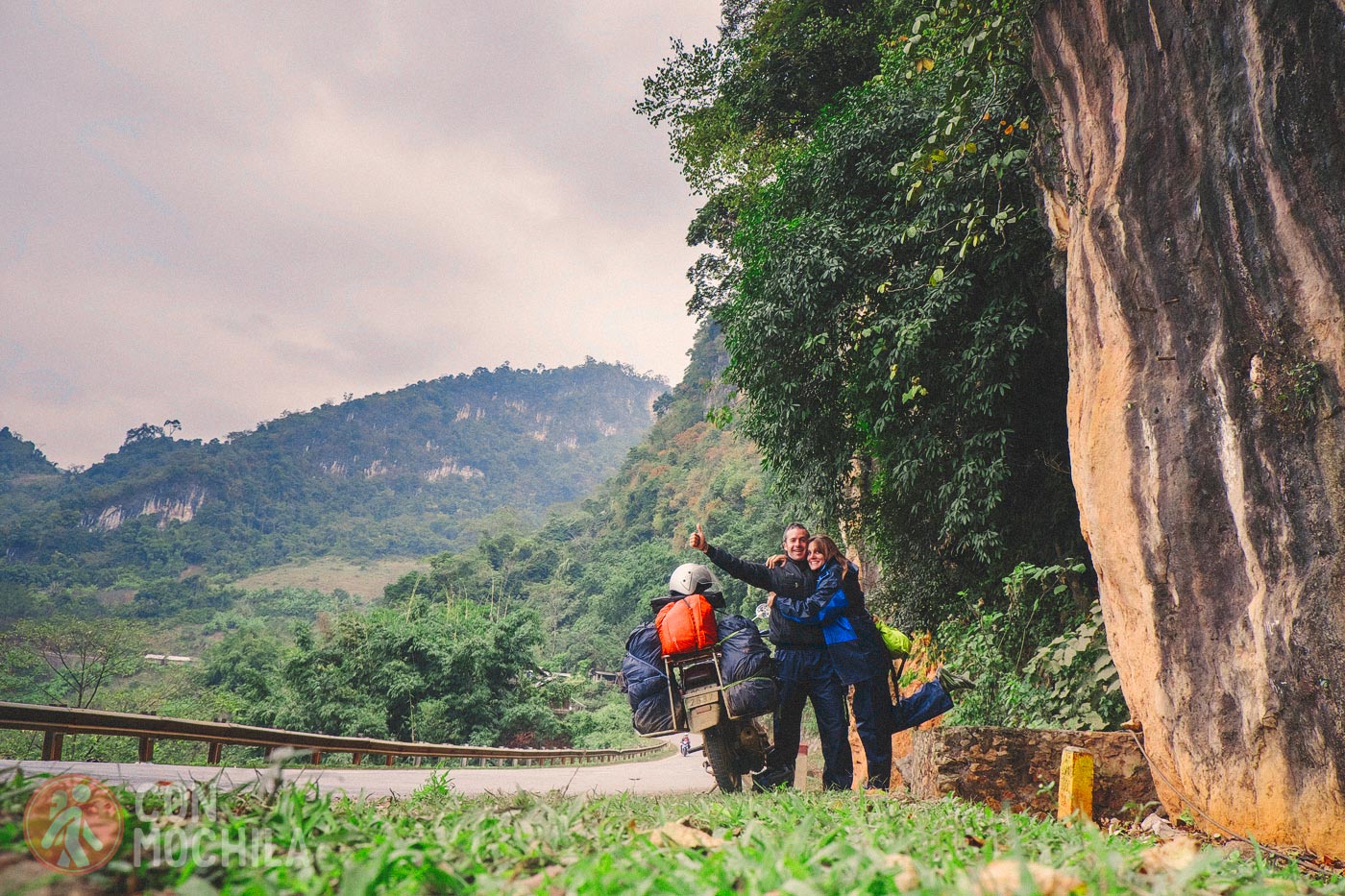
Read the Full Stage (coming soon): Stage 3. Moc Chau – Son La
The next stage brought us to Dien Bien Phu, known for the historic battle between the Viet Minh and French forces. Although we traveled on a well-maintained road, the fog attacked again. This time, however, we were prepared.
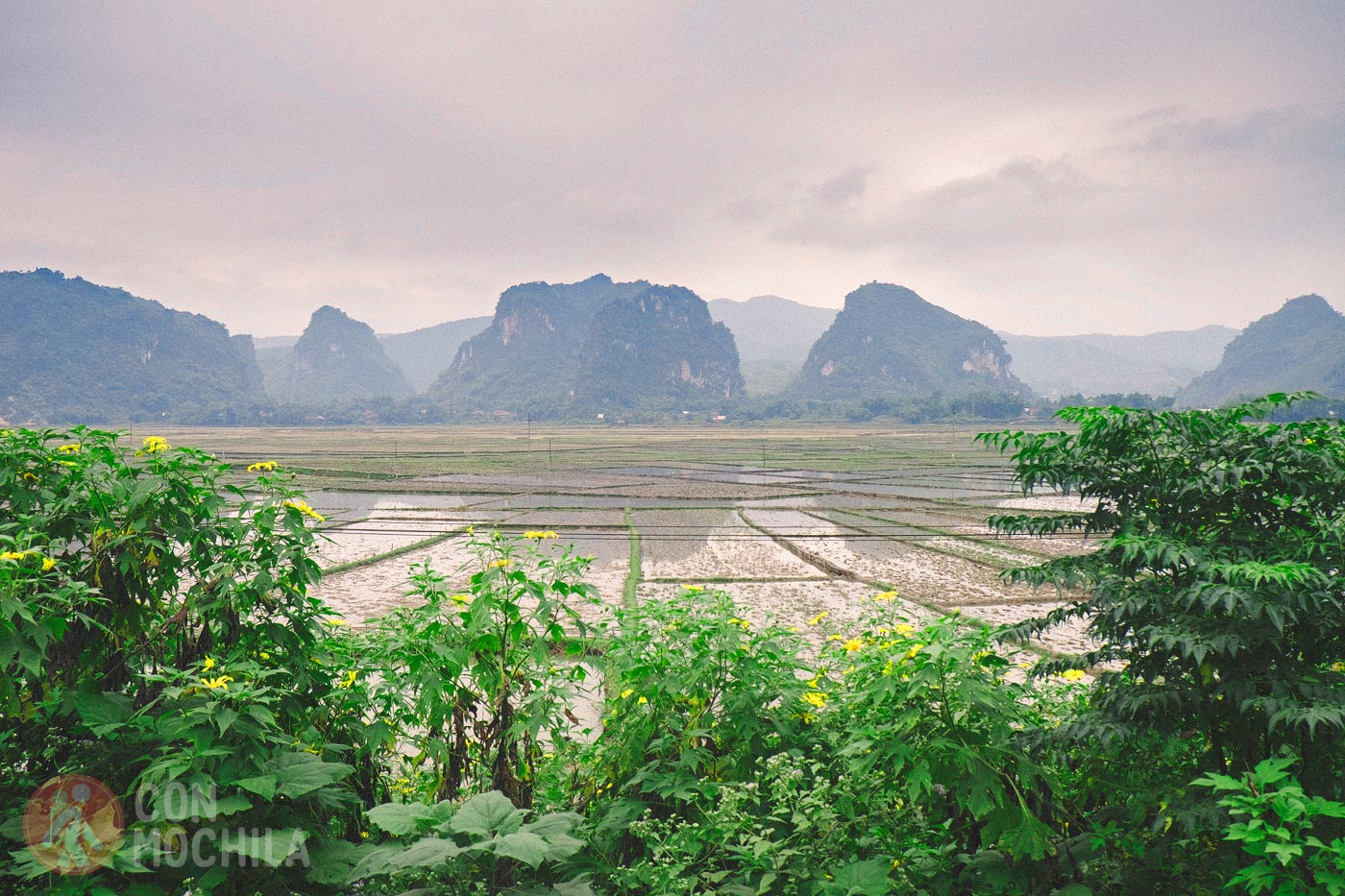
Read the Full Stage (coming soon): Stage 4. Son La – Dien Bien Phu
The stage to Lai Chau was, without a doubt, the toughest (and ultimately, the longest). It started out beautifully, with good weather and a road winding through lush mountain areas before crossing rice fields, where we stopped to snap a few photos. Little did we know what challenges awaited us…
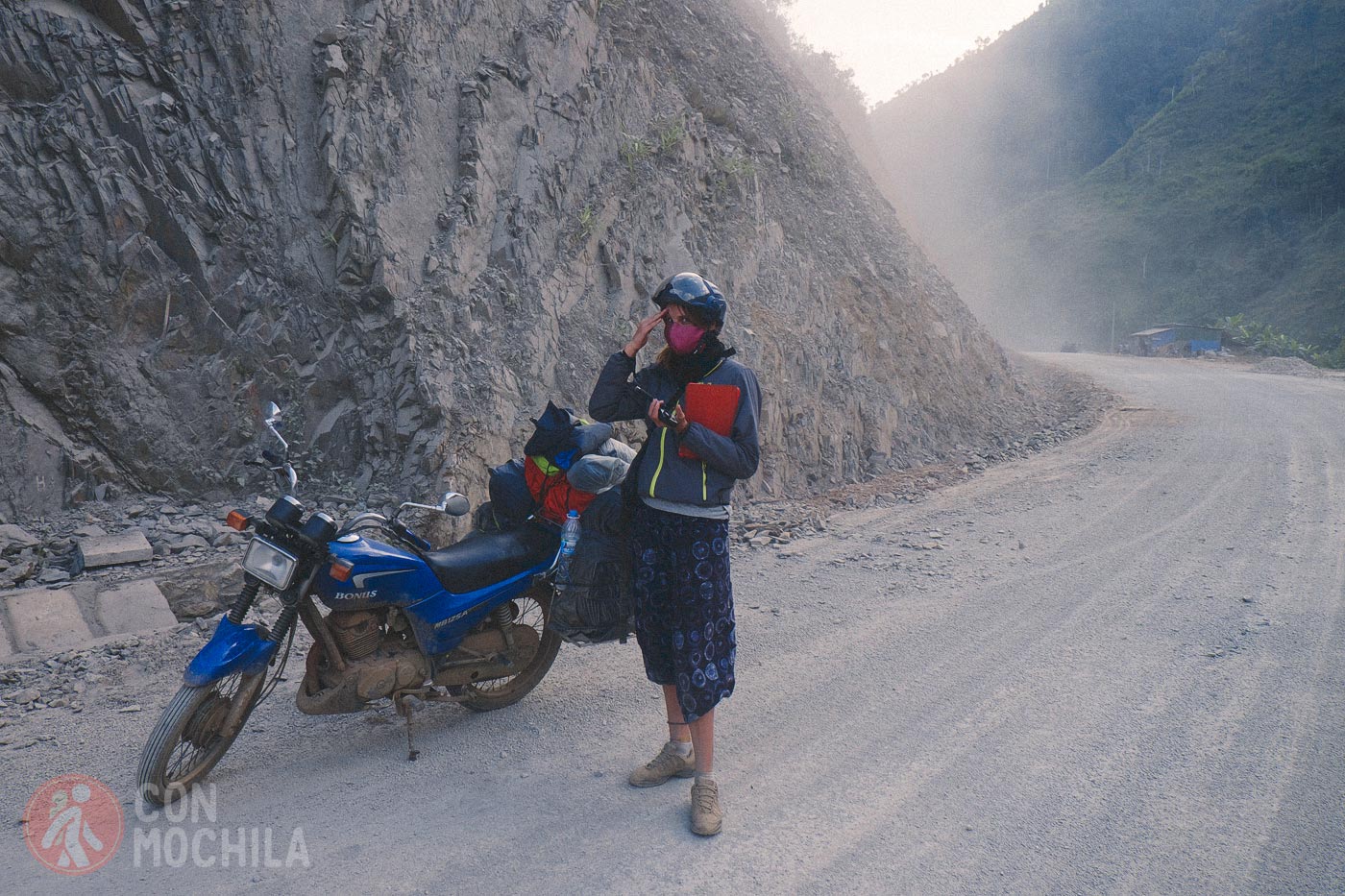
Read the Full Stage (coming soon): Stage 5. Dien Bien Phu – Lai Chau
Finally, it was time for our first long-distance trip: Sapa. After so many days with sore backs, we thought a break was near, and we looked forward to enjoying the beautiful, green landscape in this scenic part of northern Vietnam. How naive we were—not realizing what the weather would throw at us in the coming days…
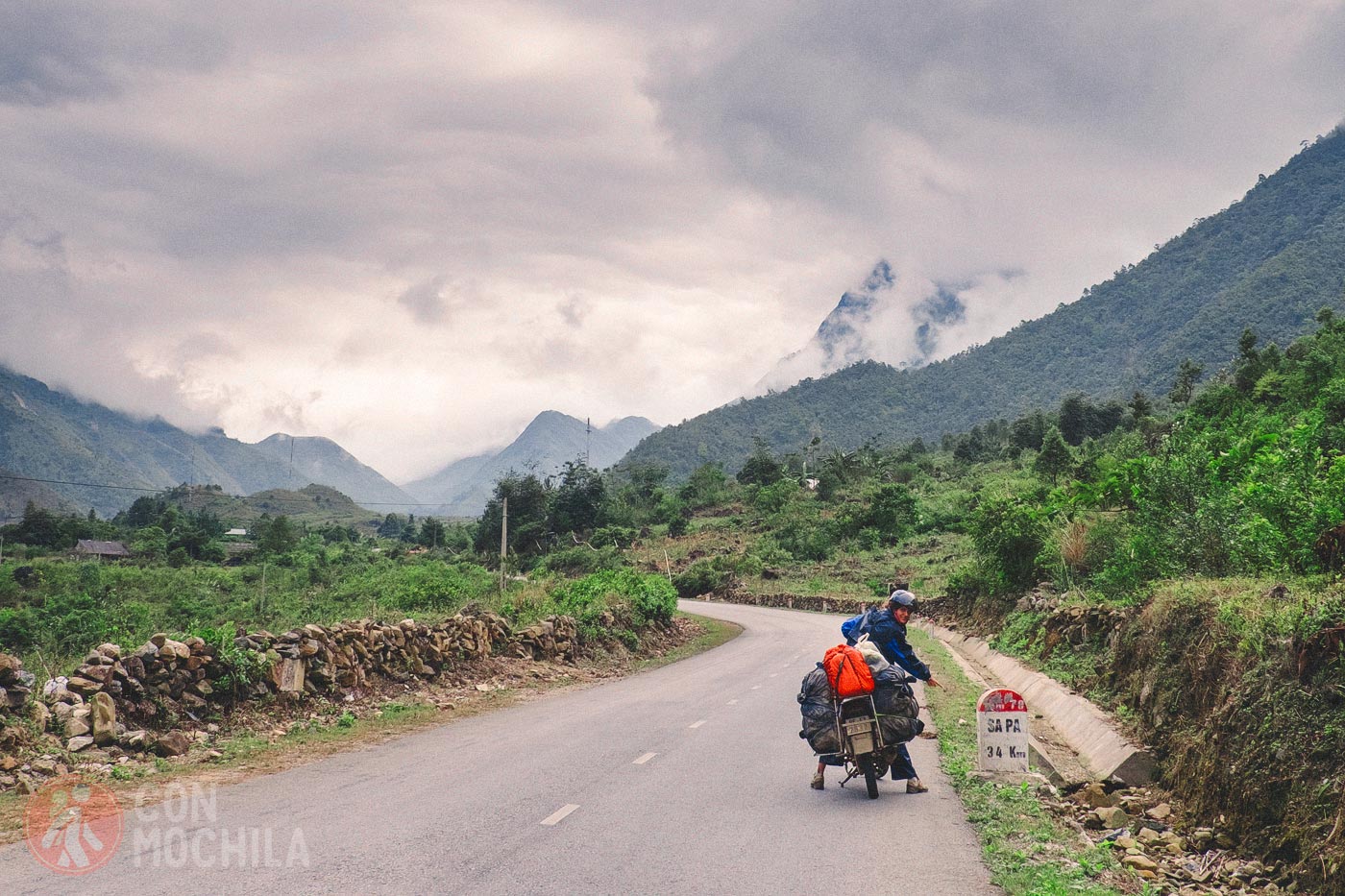
Read the Full Stage (coming soon): Stage 6. Lai Chau – Sapa
In this stage, we returned from Sapa to our starting point, Hanoi. But given the great distance back to the capital, we decided to make the trip by train after discovering that we could transport the motorbike on the Lao Cai – Hanoi train. The train left from Lao Cai in the afternoon, so we spent our last hours at the hotel before riding the motorbike to town.
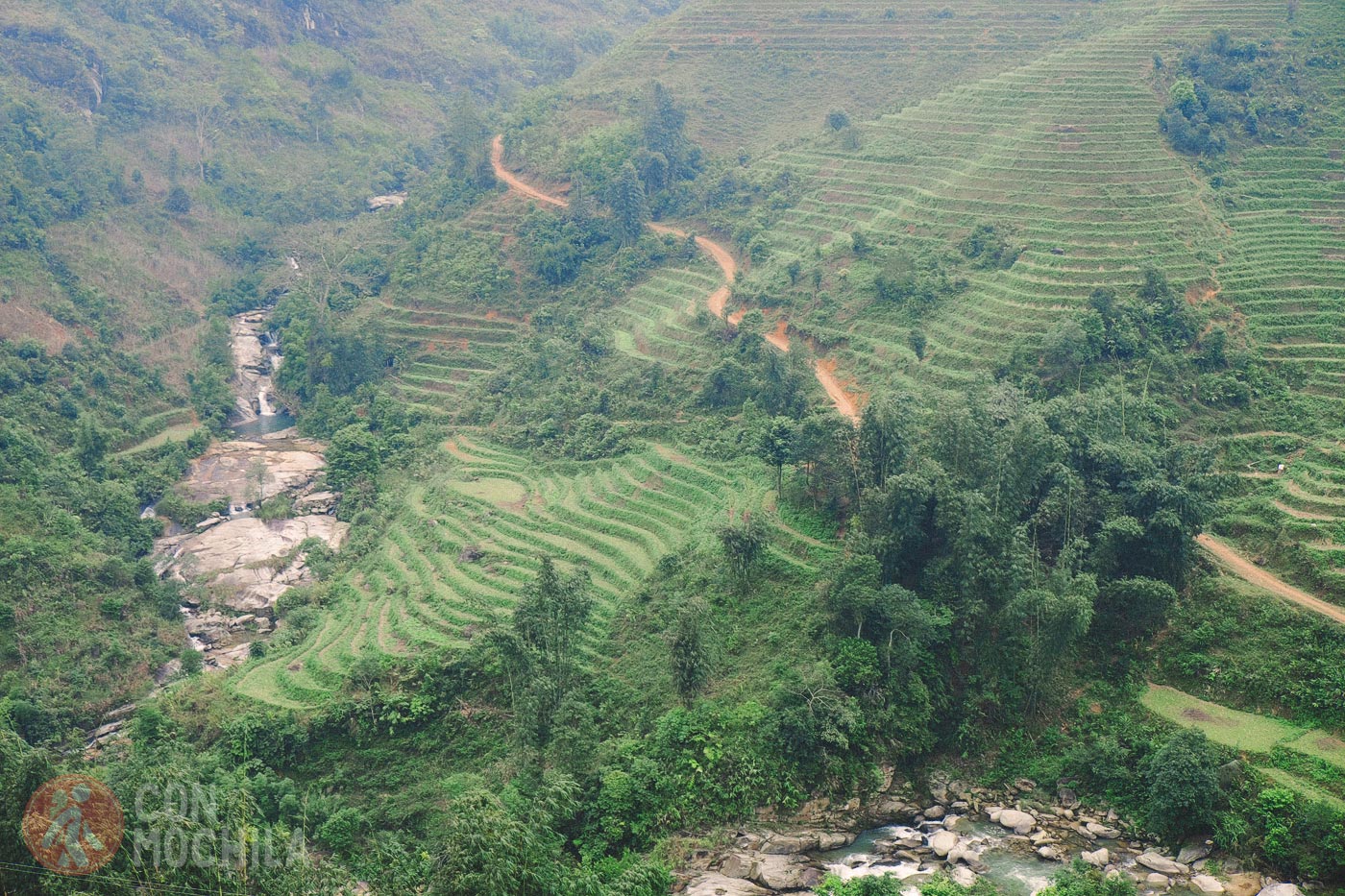
Read the Full Stage (coming soon): Stage 7. Sapa – Lao Cai – Hanoi
Changing scenery, we continued our motorbike journey through Vietnam, heading east to Halong Bay, specifically to its largest island, Cat Ba. Ahead lay one of our most challenging journeys. Although the road from Hanoi to Halong was smooth with few potholes, it’s a major and very busy route.
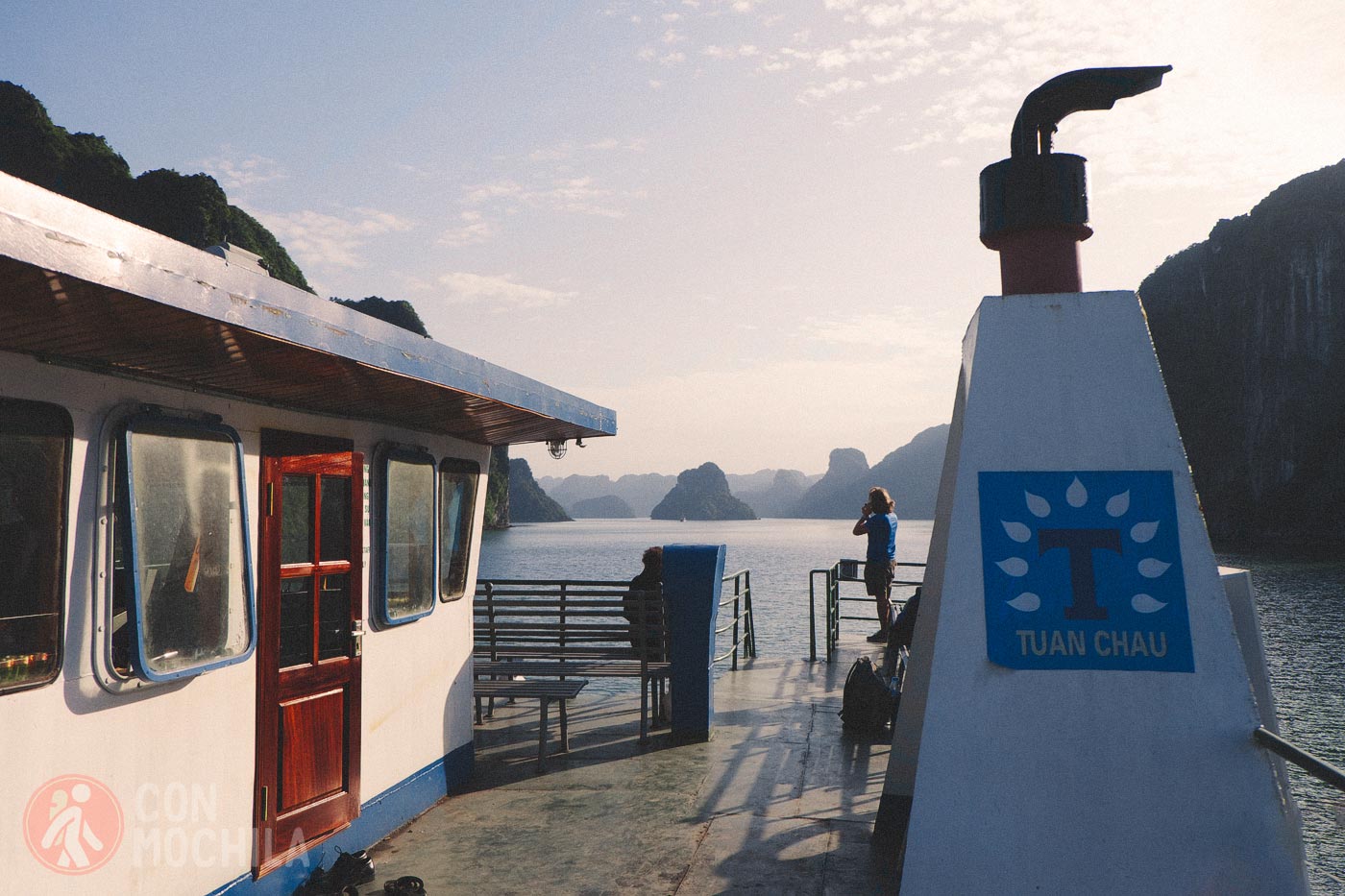
Read the Full Stage (coming soon): Stage 8. Hanoi – Cat Ba
Stage 9 was similar to the journey to Cat Ba, the largest island in Halong Bay. It was a long, tiresome ride on roads with heavy traffic. Despite the good road conditions, it took us 4 hours and 39 minutes to cover the 169-kilometer distance.
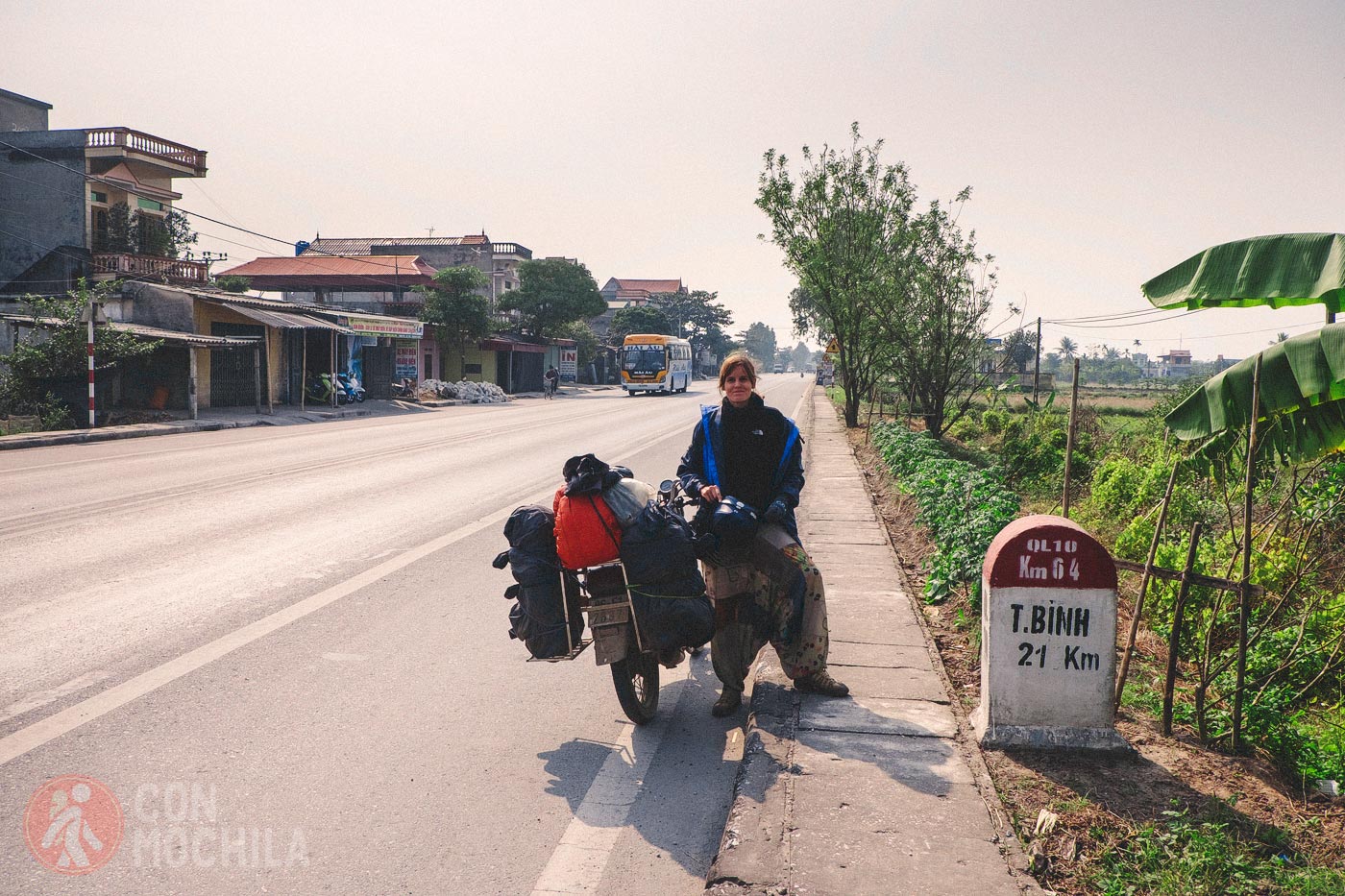
Read the Full Stage (coming soon): Stage 9. Cat Ba – Ninh Binh
Our next stop in Vietnam brought us back to the coast, this time to the town of Sam Son. Although it’s a popular tourist destination among locals, it was nearly deserted in mid-December. We didn’t have any particular reason for stopping there; we simply needed a rest before reaching our next destination, Dong Hoi.
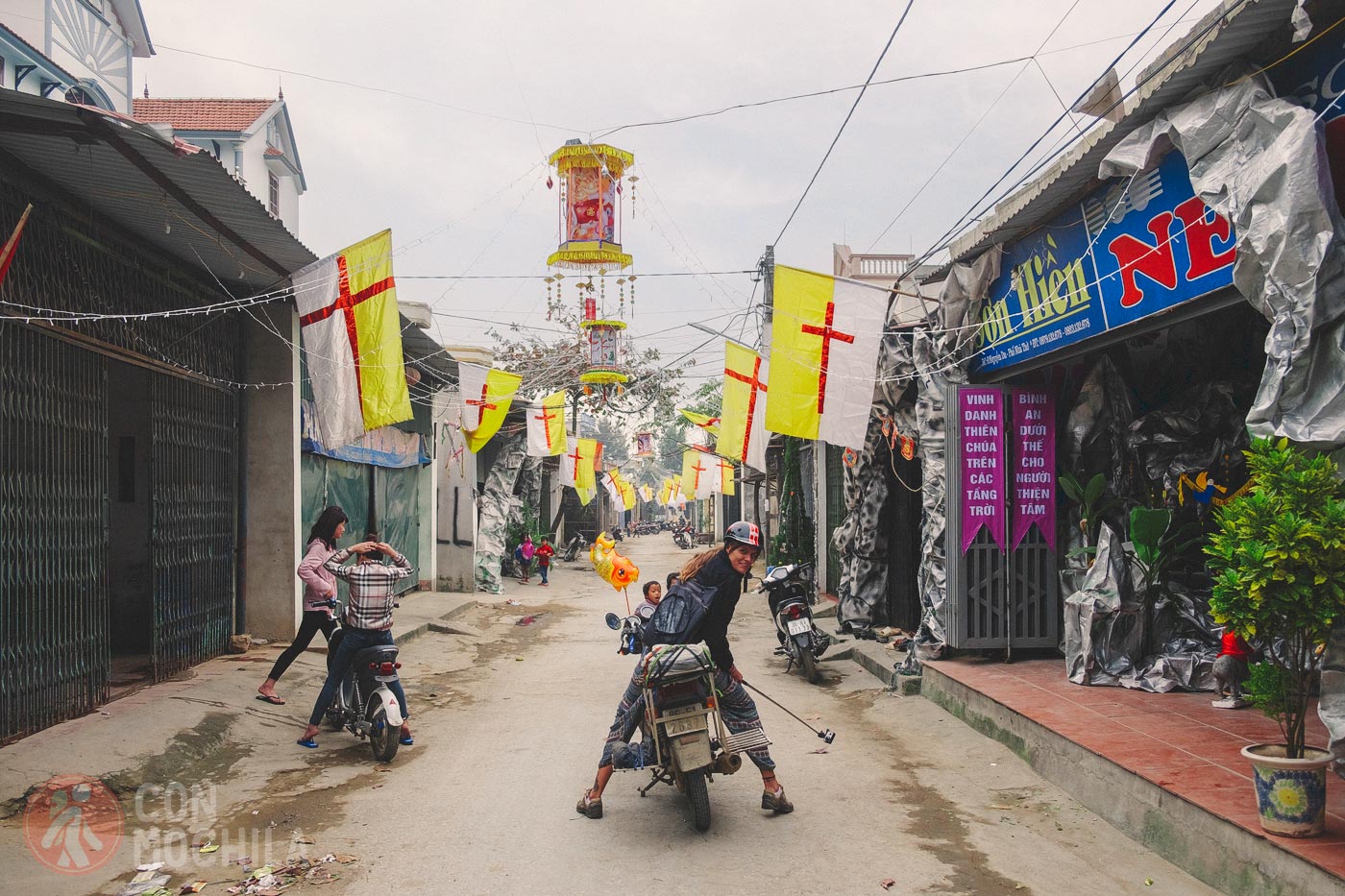
Read the Full Stage (coming soon): Stage 10. Ninh Binh – Sam Son beach
On the second day of Christmas, we said goodbye to the desolate town of Sam Son and the ghostly hotel where we had stayed, resuming our journey south. Our next stop was Vinh, a city we passed through without much to note, though we decided to stay overnight to avoid covering too many kilometers at once.
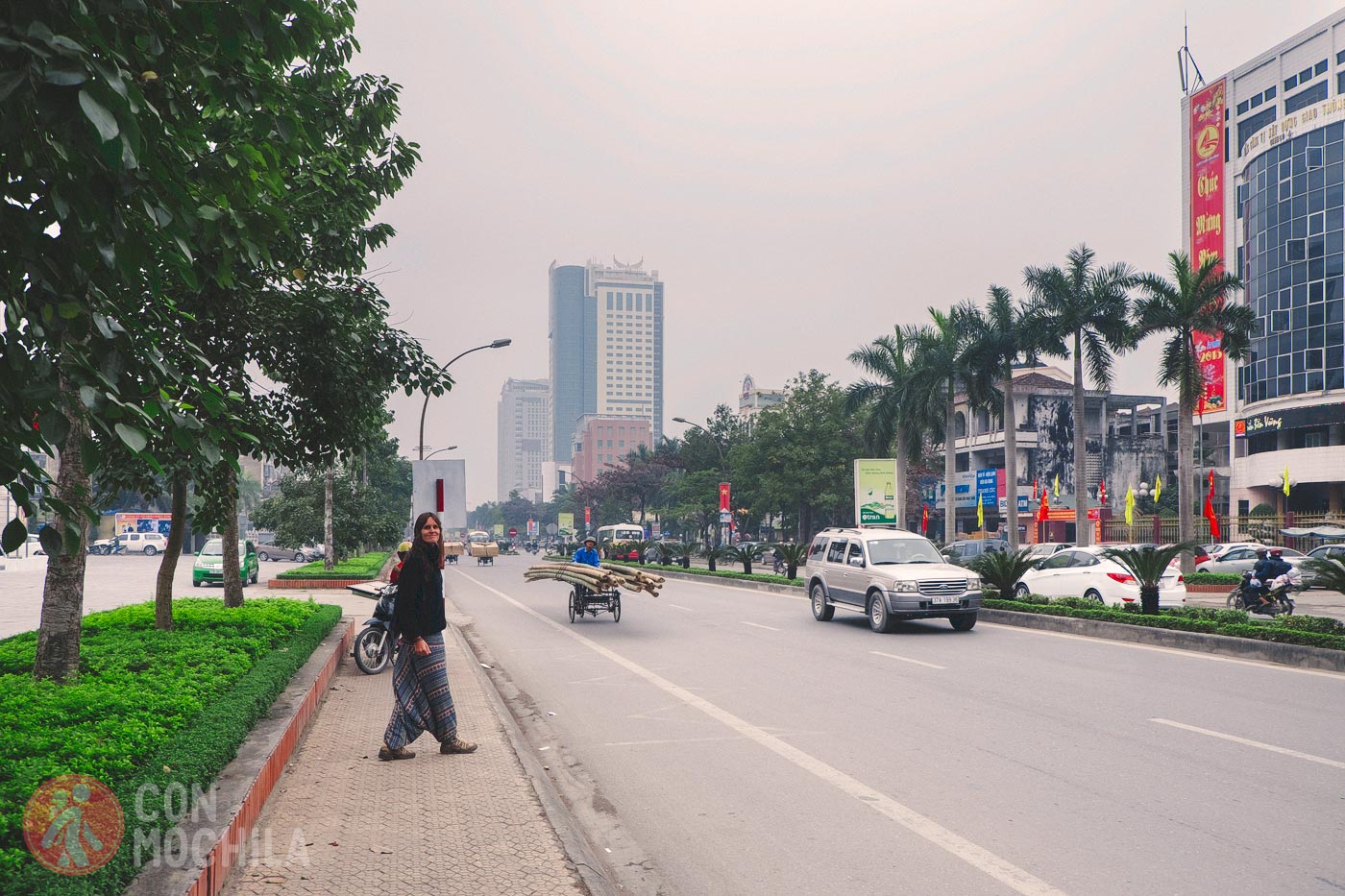
Read the Full Stage (coming soon): Stage 11. Sam Son Beach – Vinh
Our next destination finally proved a bit more interesting than the previous two. Dong Hoi, located north of the demilitarized zone and once a border town during Vietnam’s division, is a far more charming city than where we stayed the night before. Despite being heavily bombed during the war due to its location, it retained a welcoming feel.
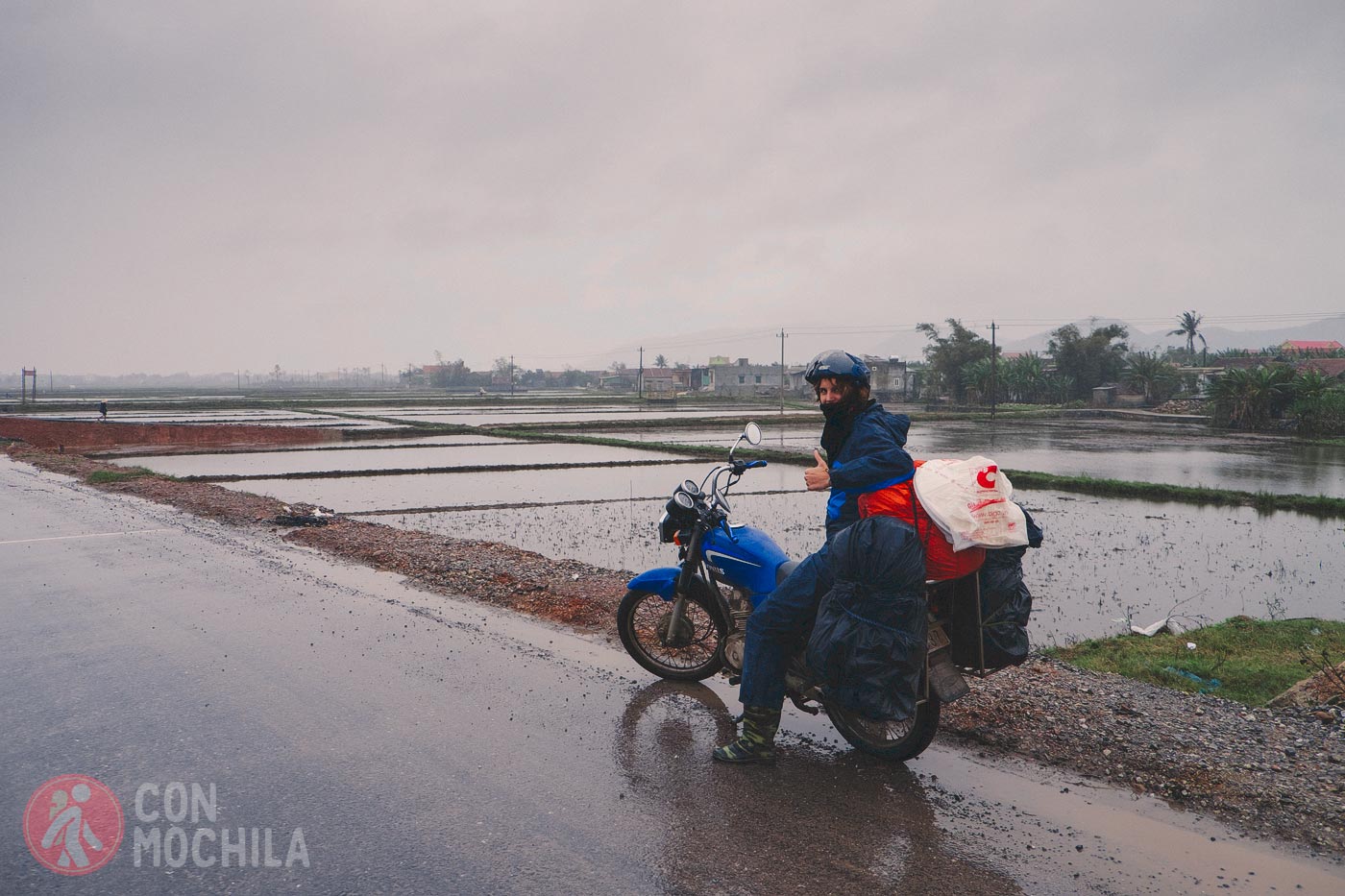
Read the Full Stage (coming soon): Stage 12. Vinh – Dong Hoi
After twenty-two days of traveling through northern Vietnam, it was time to cross the former border between the Democratic Republic of Vietnam (DRV) in the north and the Republic of Vietnam (RVN) in the south. Though Dong Hoi and Dong Ha are only 99 km apart, the rain and cold stretched the three-and-a-half-hour journey, making it feel much longer.
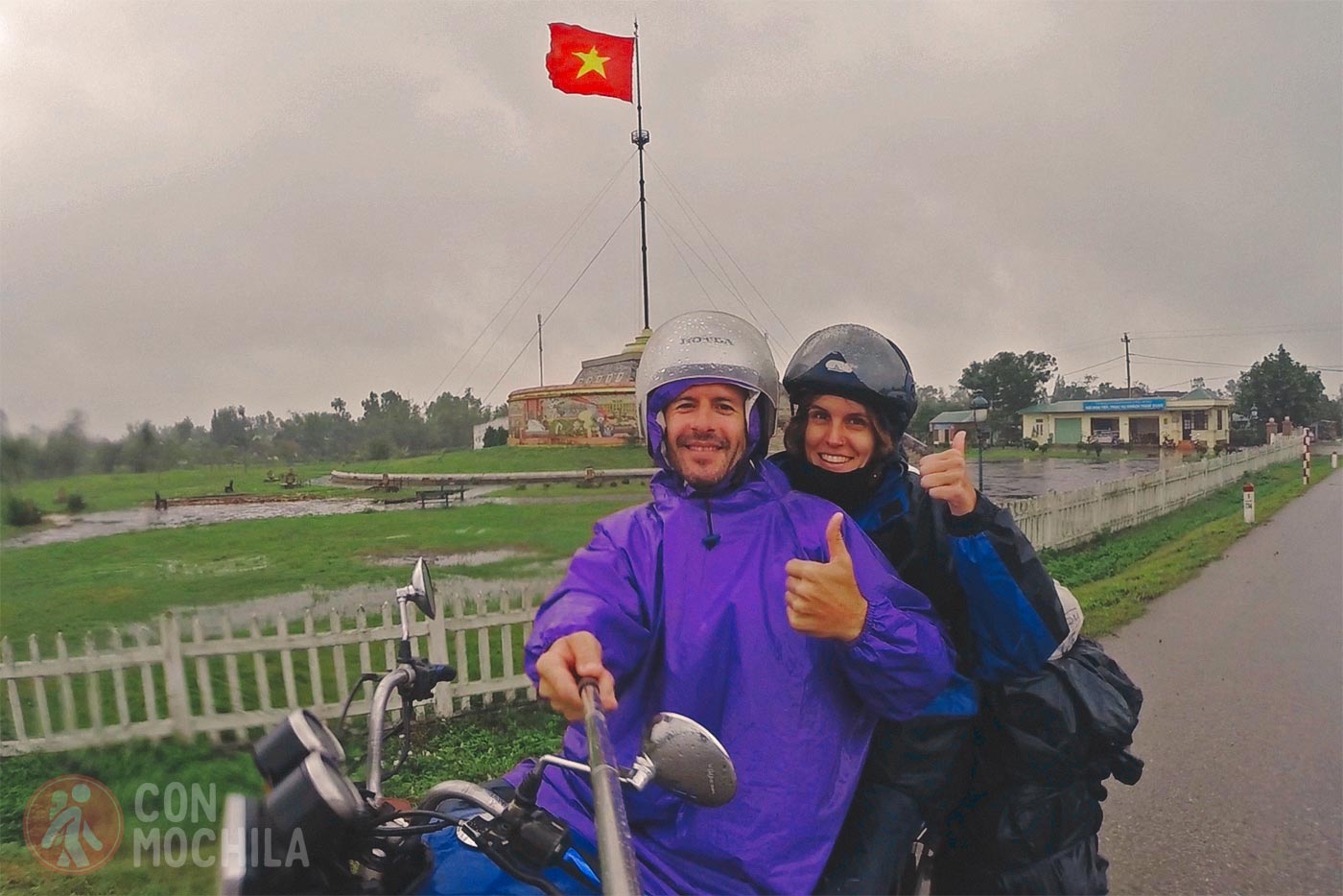
Read the Full Stage (coming soon): Stage 13. Dong Hoi – Dong Ha
The stretch from Dong Ha to the ancient imperial capital of Hue, in the heart of Vietnam, was perhaps one of the easiest stages of our motorbike journey. Only 70 km separate the two cities, connected by National Highway 1A, so we covered the distance within a couple of hours.
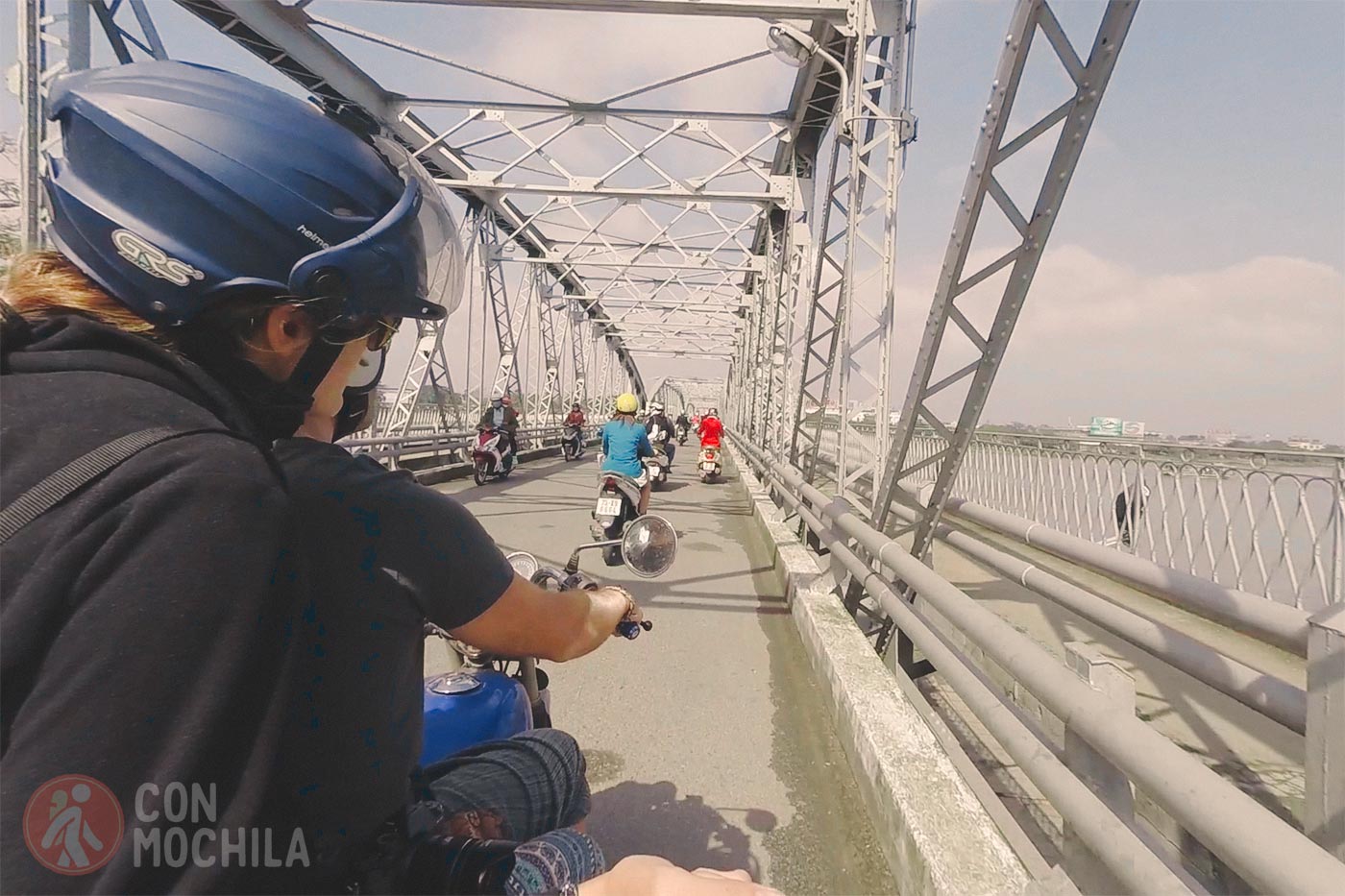
Read the Full Stage (coming soon): Stage 14. Dong Ha – Hue
After more than a week of rest in Hue, we finally felt strong enough to continue traveling through Vietnam. Among the potential next stops was Da Nang, a coastal city known for its nearby Marble Mountains. However, Toni, who had already visited it, wasn’t too keen, so we chose to go straight to Hoi An. Besides, we weren’t planning to enjoy the beaches, which is one of Da Nang’s main draws.
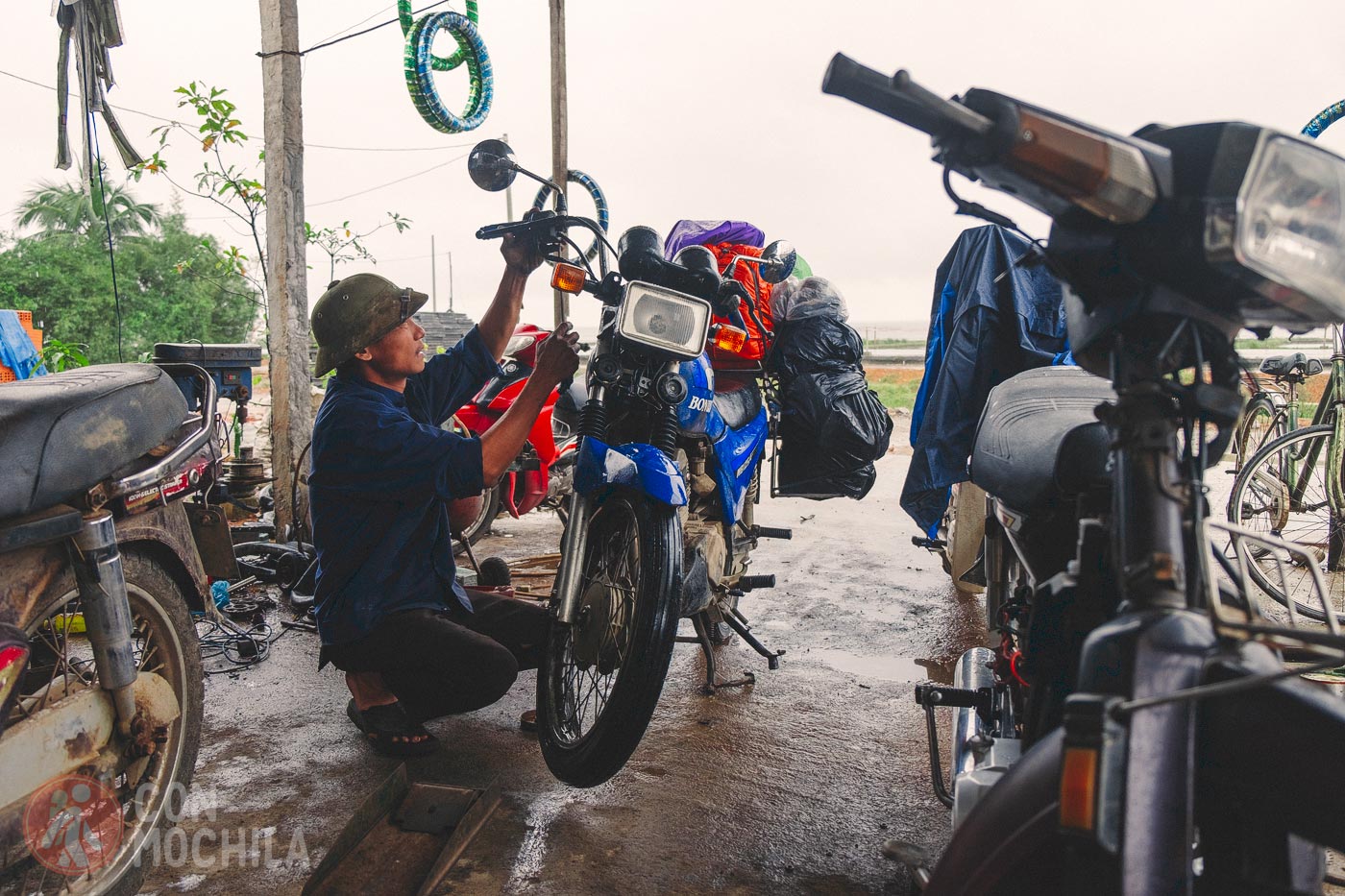
Read the Full Stage (coming soon): Stage 15. Hue – Hoi An
Our next planned stop was Quy Nhon, a city from which we could take excursions to see Cham ruins. But since it was more than 300 km from Hoi An, we needed a town along the way to spend the night. This led us to My Khe, a coastal town that might have been appealing in summer, but in mid-January, it felt deserted and unwelcoming.
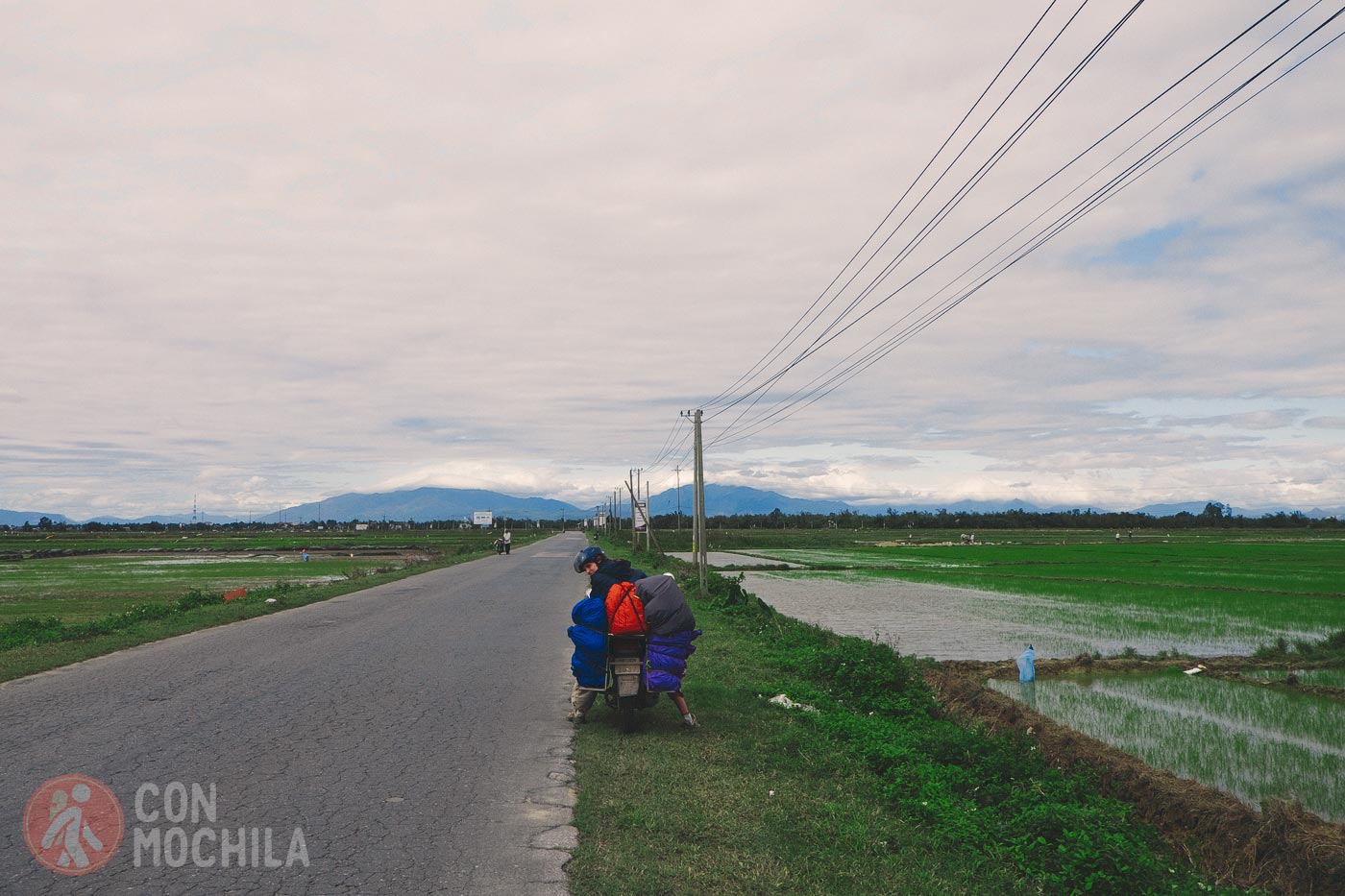
Read the Full Stage (coming soon): Stage 16. Hoi An – My Khe
After a night in the ghostly village of My Khe, which we were eager to leave behind, another long six-and-a-half-hour journey awaited us. Our next destination was Quy Nhon, 191 km away, another coastal city and the capital of Binh Dinh province. Here, we could visit some Cham temple ruins, walk along the beach in search of a sunken tank, and explore nearby villages.
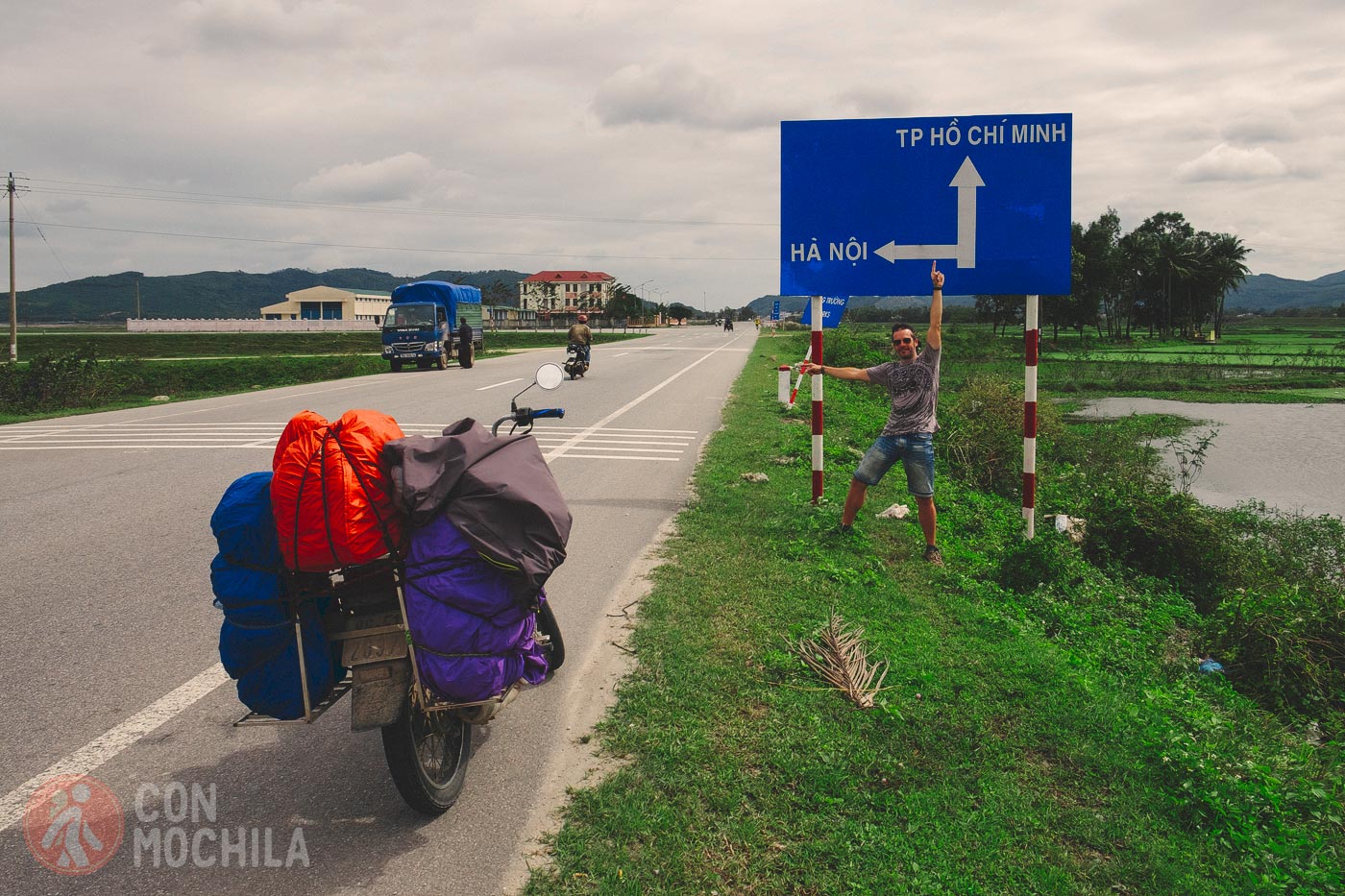
Read the Full Stage (coming soon): Stage 17. My Khe – Quy Nhon
We started the day setting out between the coastal cities of Quy Nhon and Nha Trang, we expected another challenging day on the bike. However, the ride was much easier than we had anticipated. The road was free from the grueling roadwork sections we had encountered in recent days, and it ran along the Vietnam coastline, with the South China Sea almost always in view on our left.
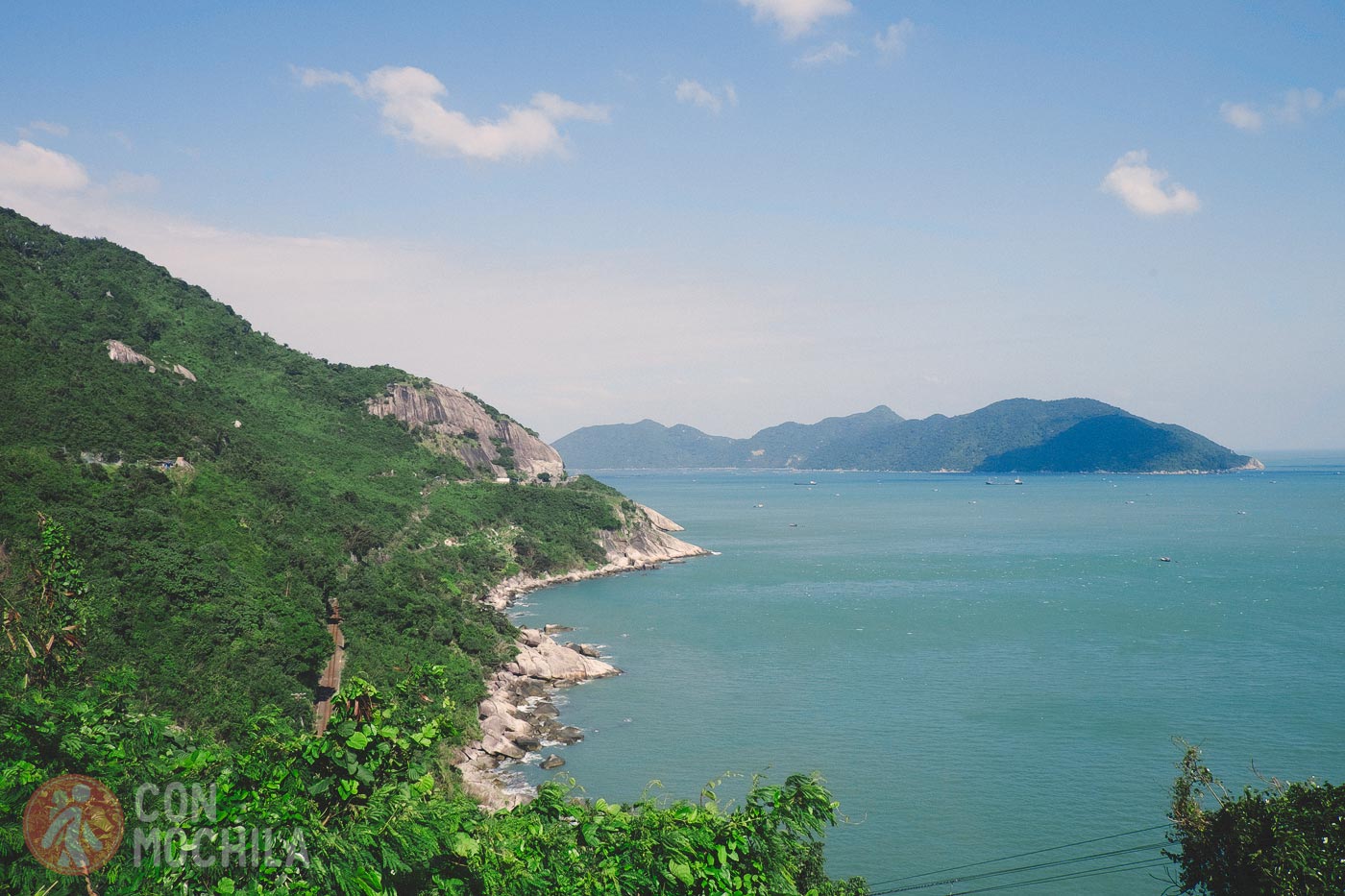
Read the Full Stage (coming soon): Stage 18. Quy Nhon – Nha Trang
And the rain returned… After a few days of sun and good weather, the rain came back as we left the coast and headed up into the highlands. Our destination was Da Lat. We faced five hours of rain and winding roads over the 146 km that separate Da Lat from Nha Trang.
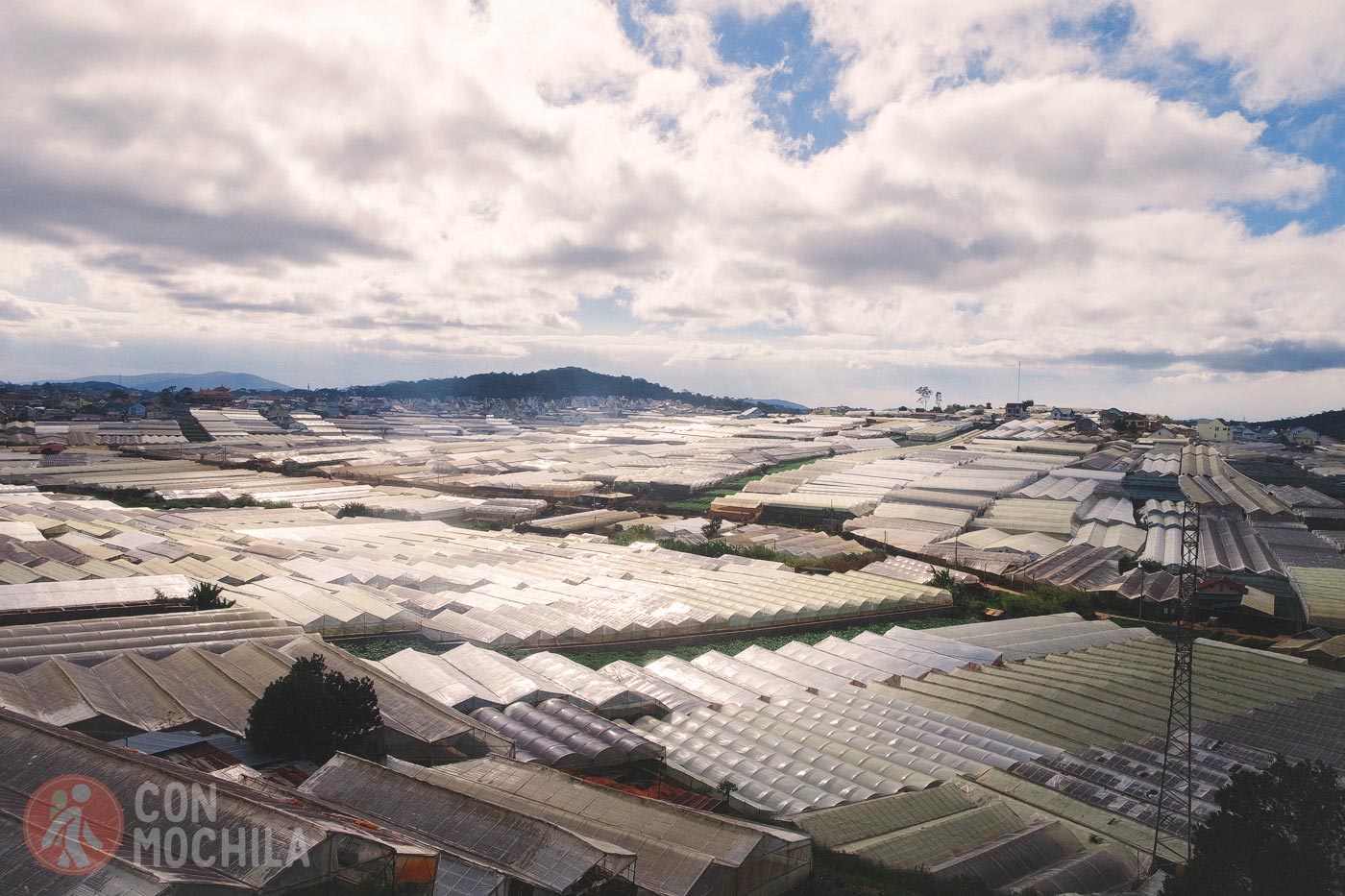
Read the Full Stage (coming soon): Stage 19. Nha Trang – Da Lat
After a day exploring the highlands, we left Da Lat and headed back to the coast, moving further south. Our next destination was Mui Ne, a fishing village known for its sand dunes, beach, and ideal conditions for sports like kitesurfing. The truth is that we were quite happy with the plan, especially now that we’d noticed how much more pleasant the climate in the south was compared to the north.
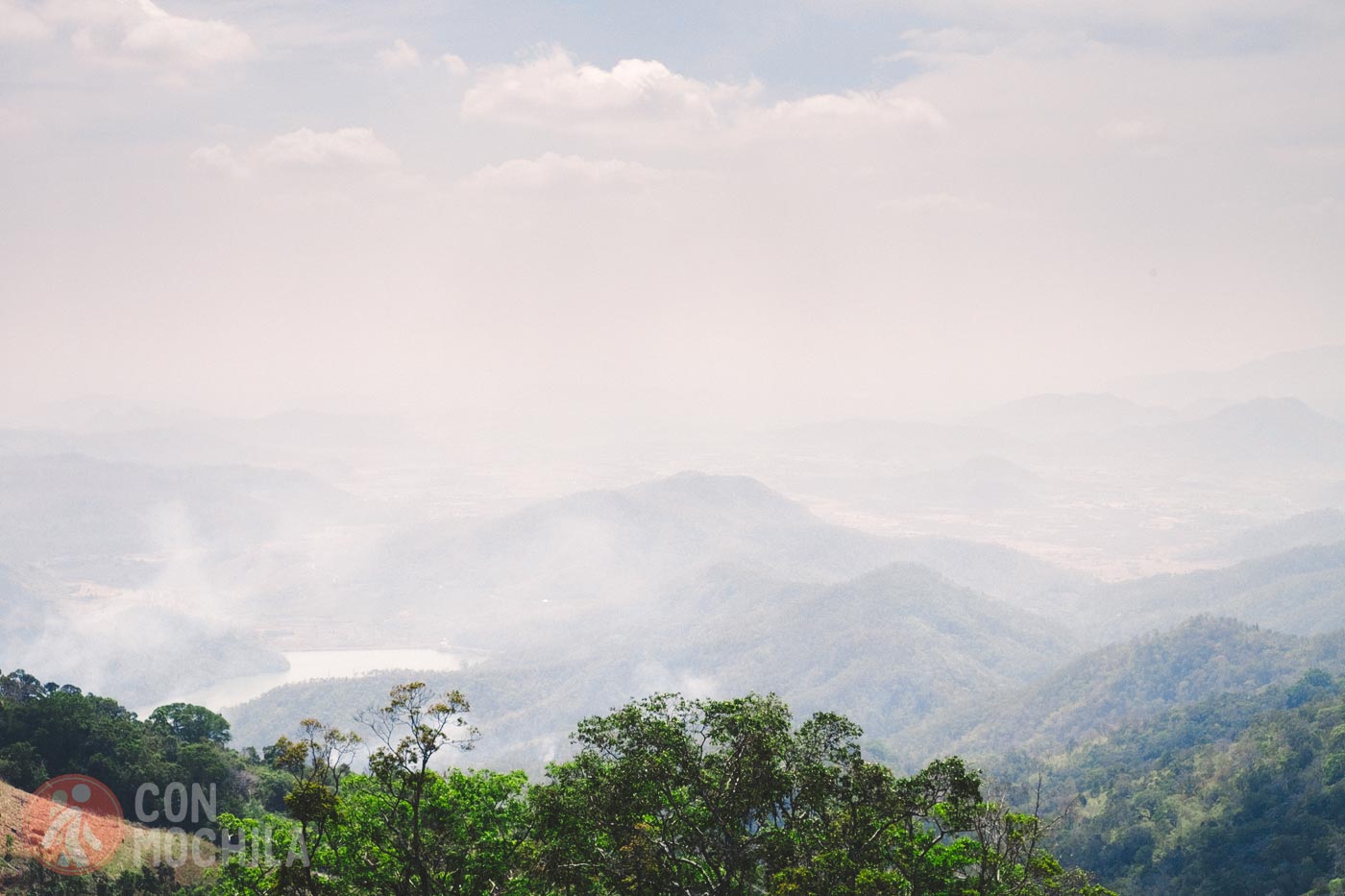
Read the Full Stage (coming soon): Stage 20. Da Lat – Mui Ne
Stage 21 was, without a doubt, the most complicated and eventful of our entire motorbike journey through Vietnam. Our original plan wasn’t to reach La Gi but rather Cat Tien, to visit the national park and hopefully see gibbons. However, Km0—our beloved motorbike and companion through thick and thin—betrayed us that day. And to make matters worse, it chose the absolute worst moment of the entire trip to do so.
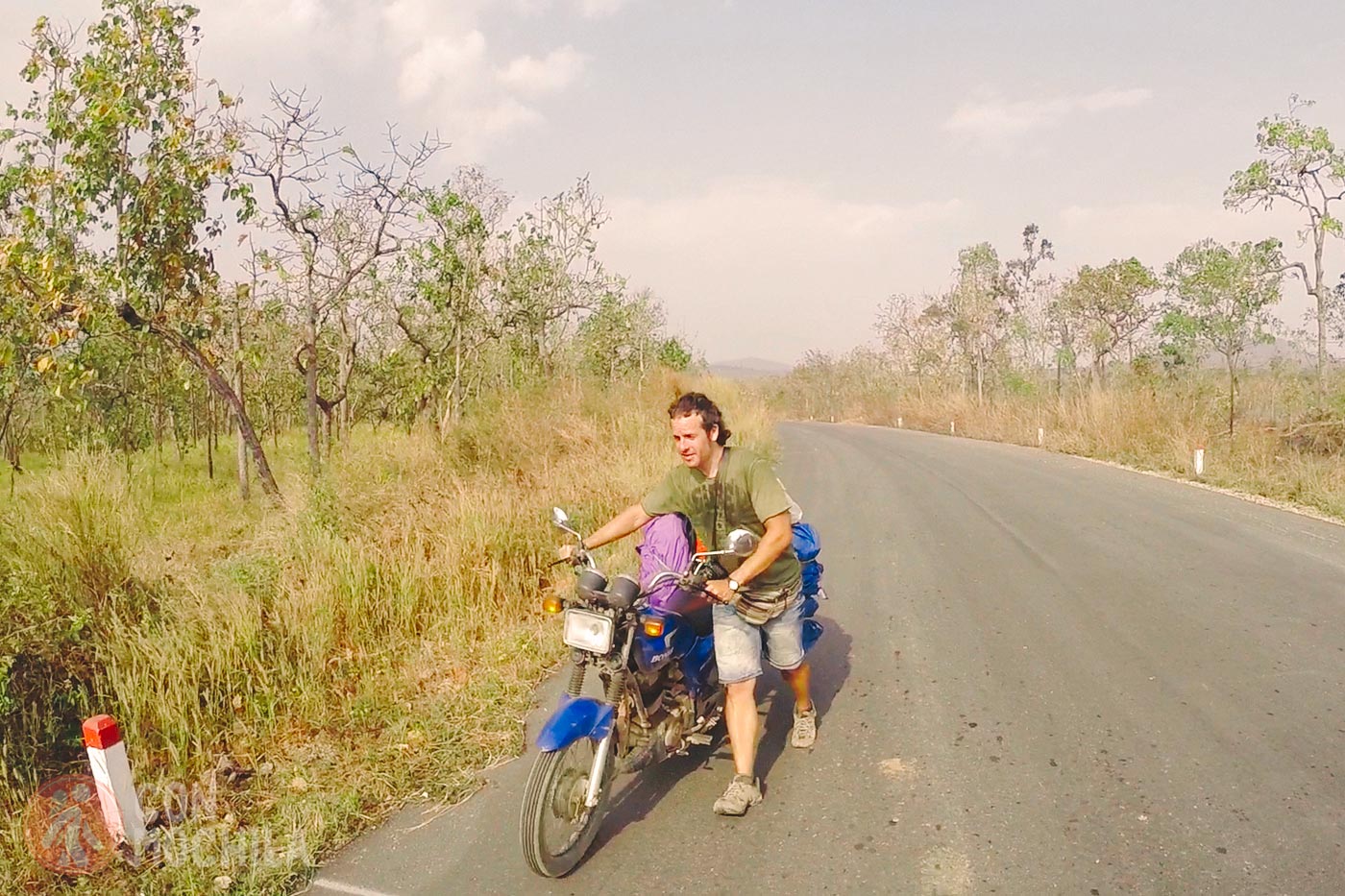
Read the Full Stage (coming soon): Stage 21. (Accidented) Mui Ne – La Gi
Two months is a long time when you’re traveling, and traveling by motorbike around Vietnam for sixty-five days leaves endless room for things to go wrong. While the previous day had been the most challenging of the entire journey, this one wasn’t without its own share of headaches.
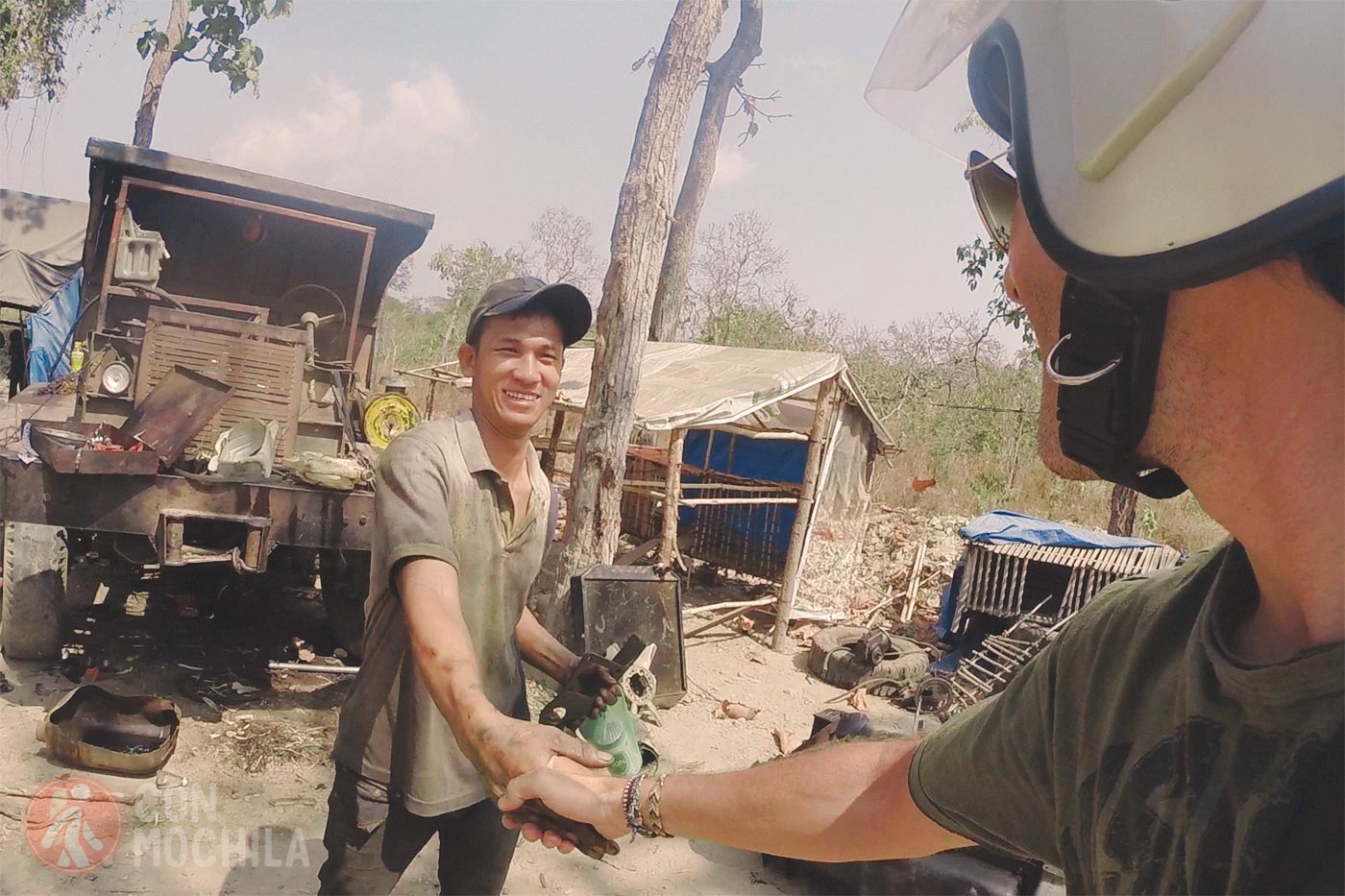
Read the Full Stage (coming soon): Stage 22. La Gi – Cat Tien
The end of our trip through Vietnam was drawing near, and with Ho Chi Minh City now appearing on our navigation screen, the idea of reaching our final destination was becoming more real. There was still the excursion through the Mekong Delta ahead, something we were particularly excited for, but arriving in this great city felt like a goal achieved after almost two months on the road by motorbike.
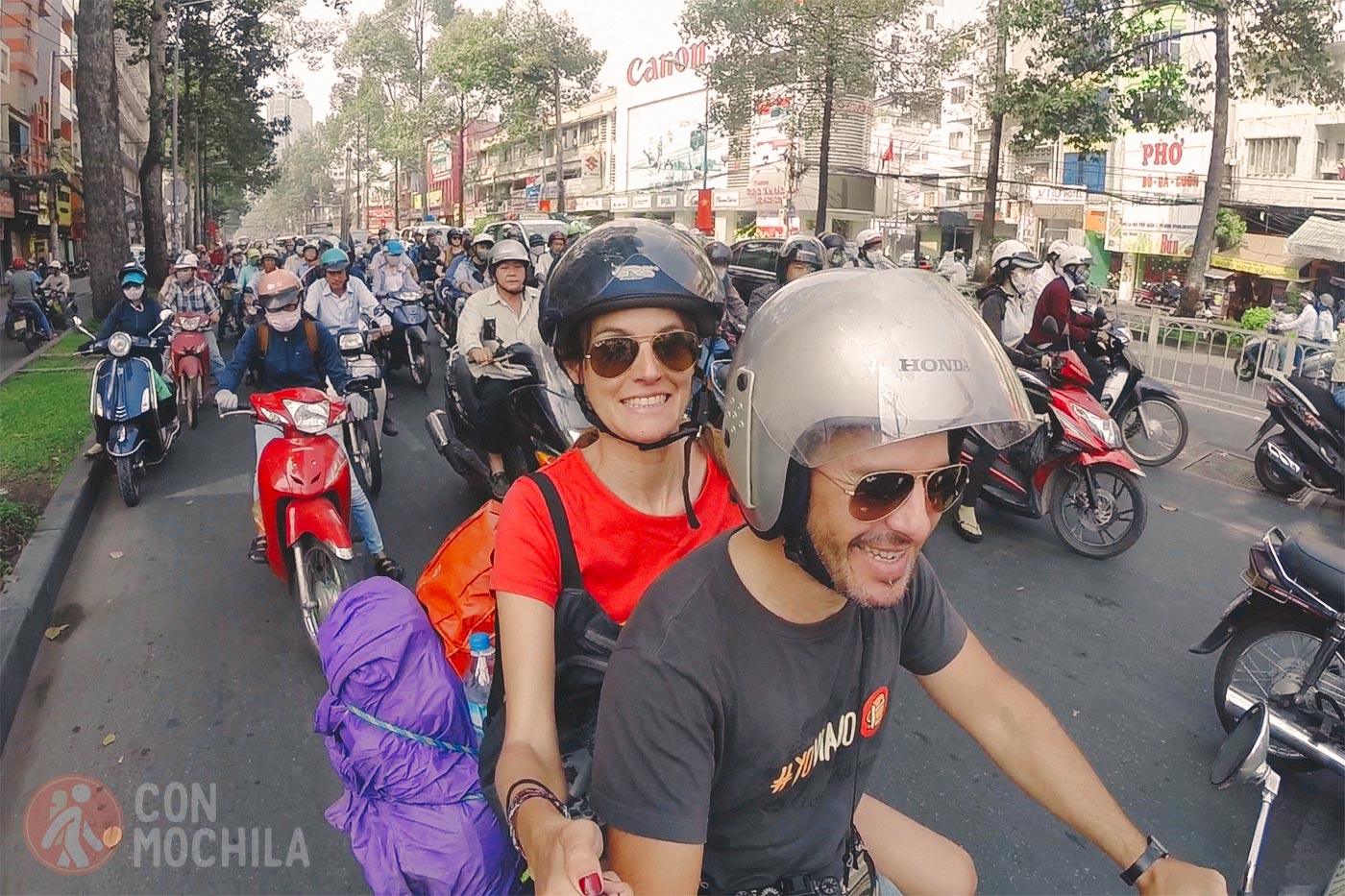
Read the Full Stage (coming soon): Stage 23. Cat Tien – Ho Chi Minh
There are several locations from which you can explore the Mekong Delta, the final stretch of this enormous river that flows into the South China Sea in Vietnam. Of the various towns offering accommodations and excursions in the area, we ultimately decided on Ben Tre, a location that was neither too far nor too close to Ho Chi Minh City.
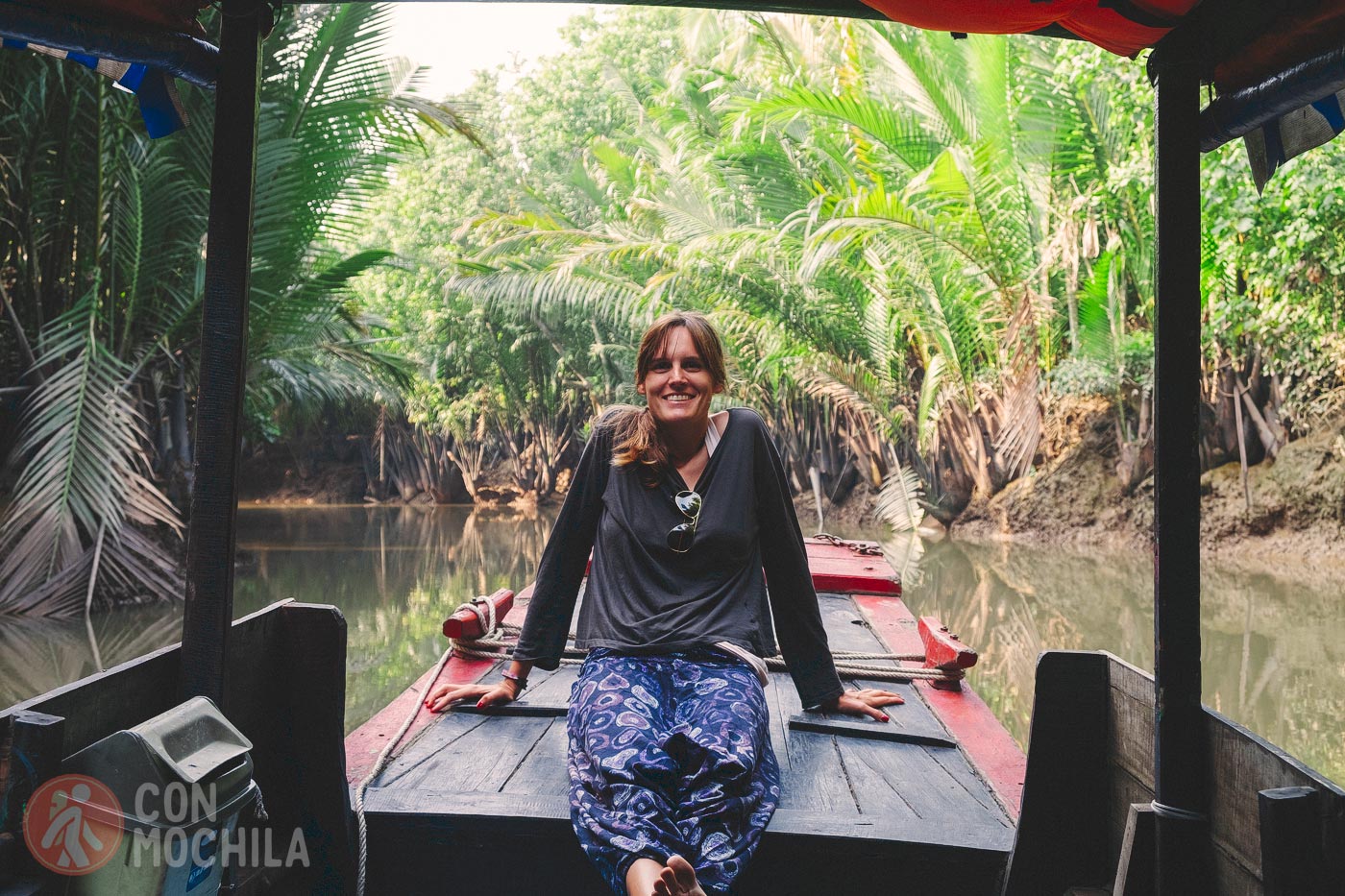
Read the Full Stage (coming soon): Stage 24. Ho Chi Minh – Ben Tre